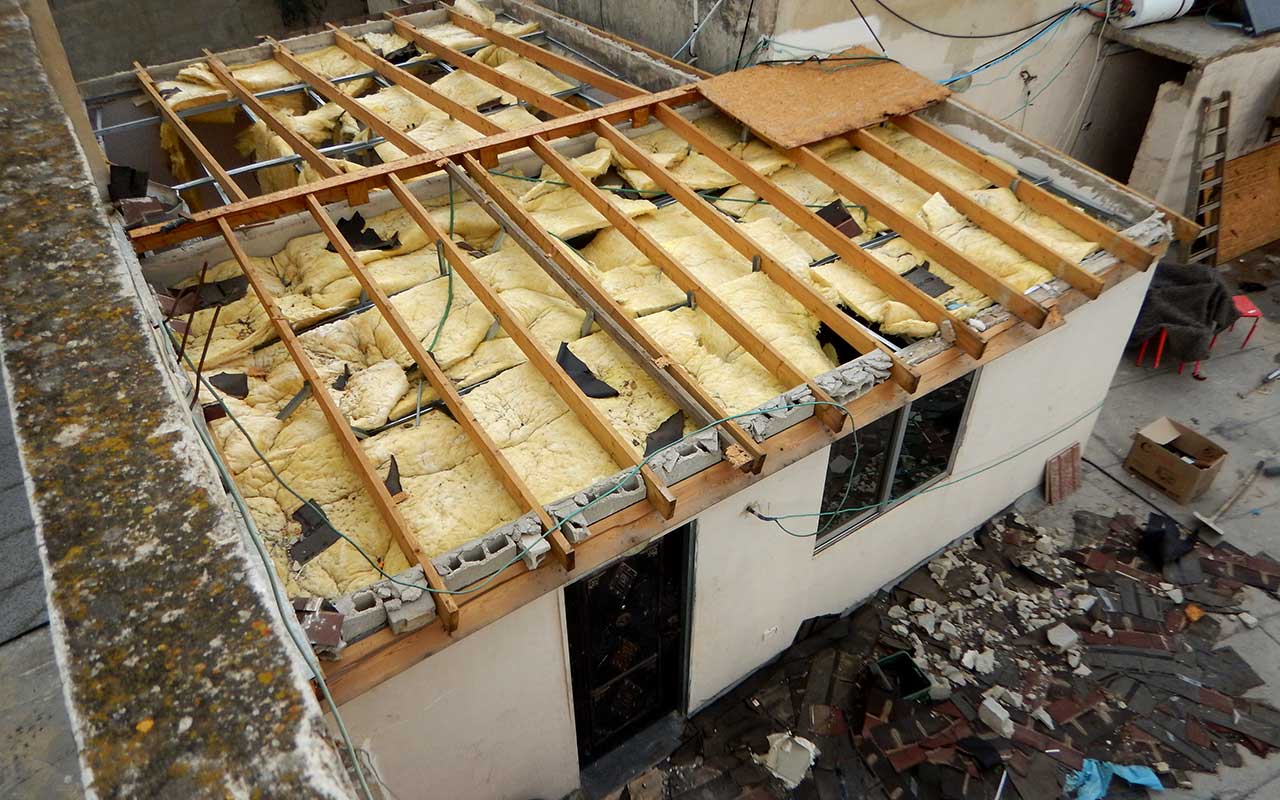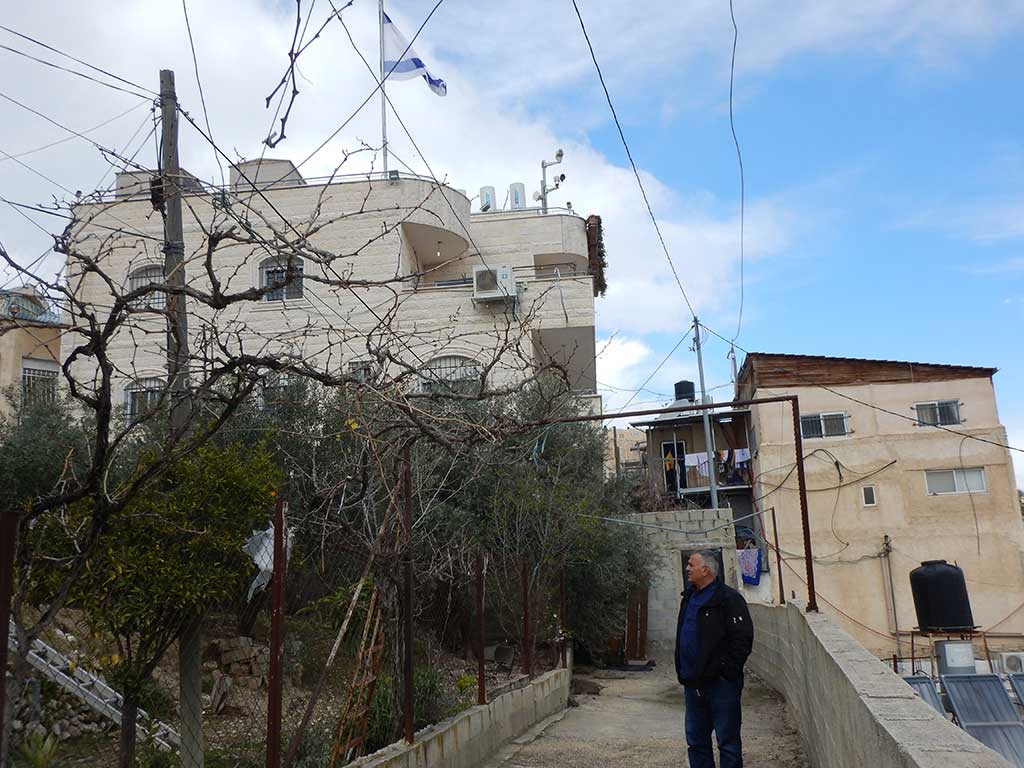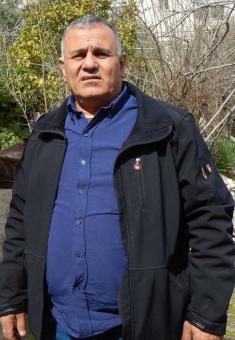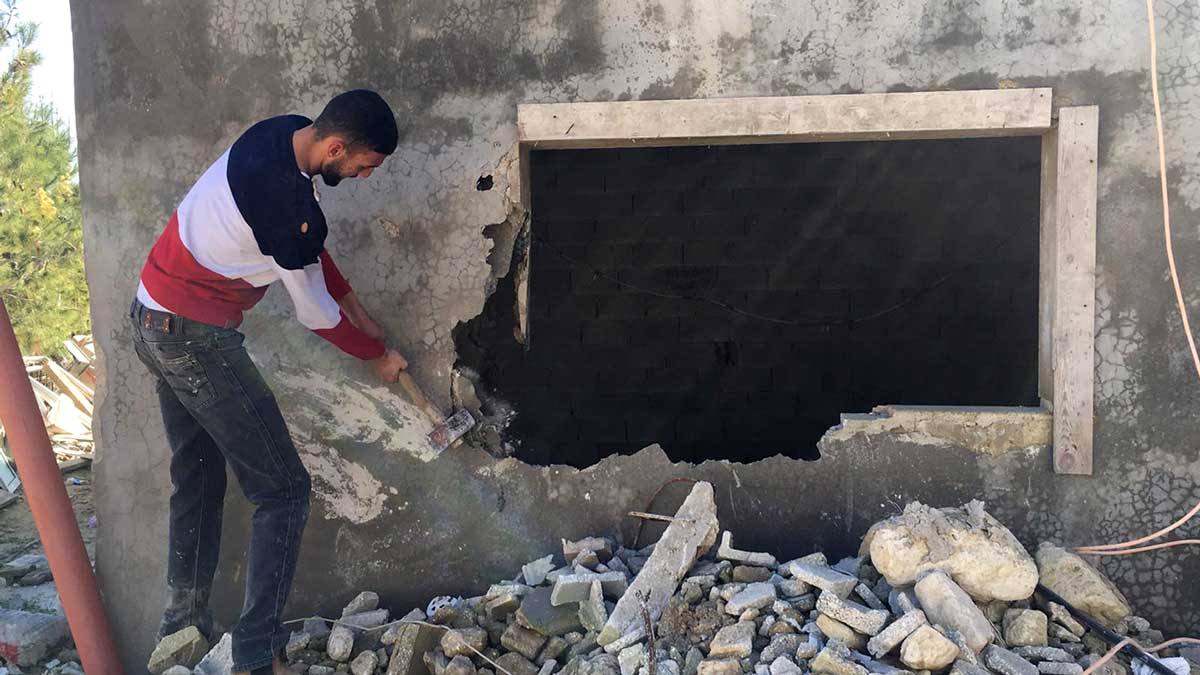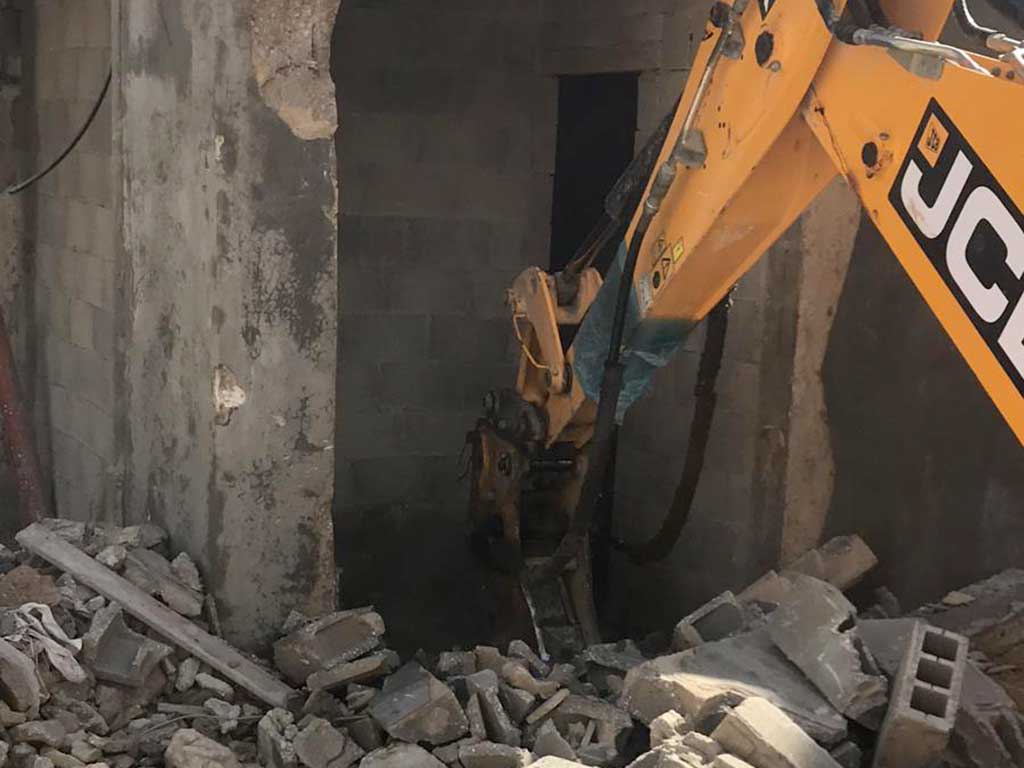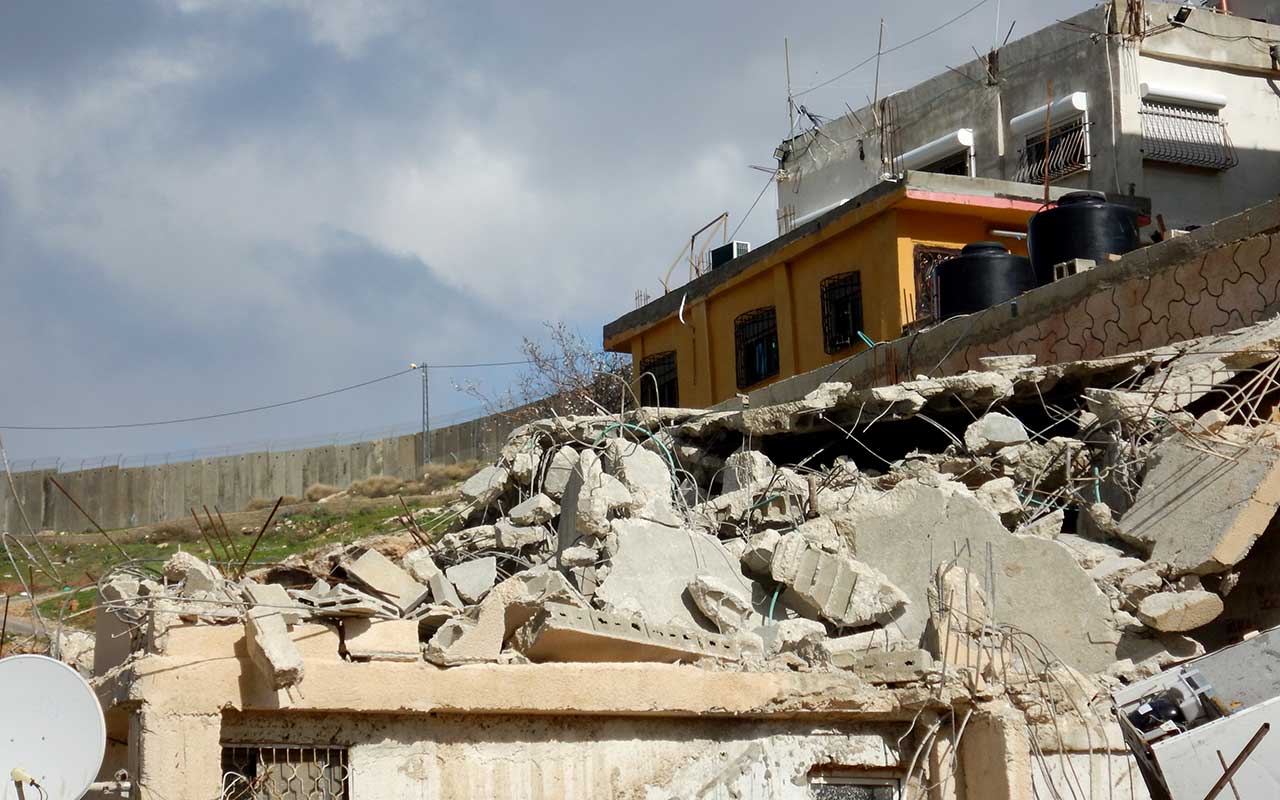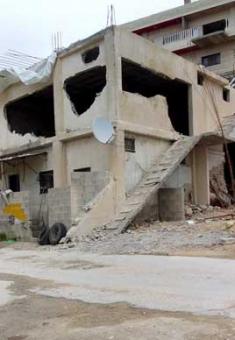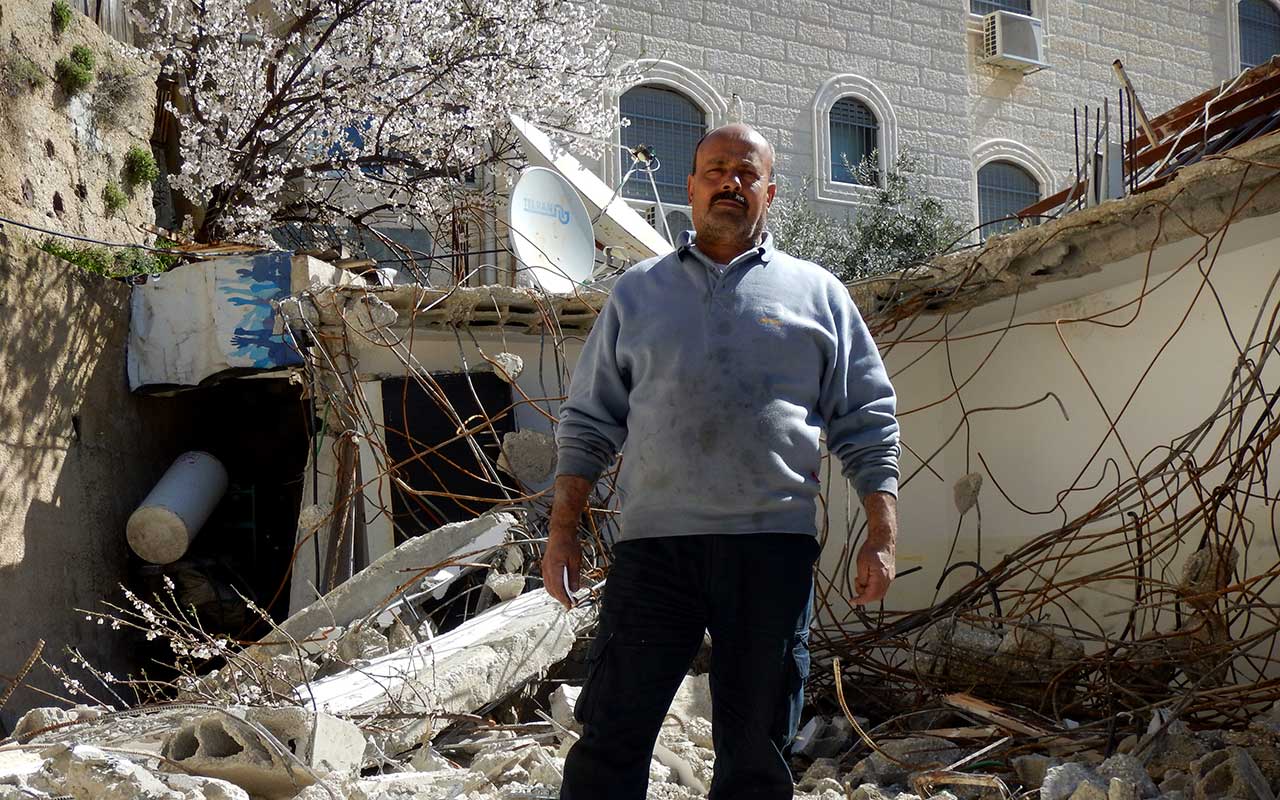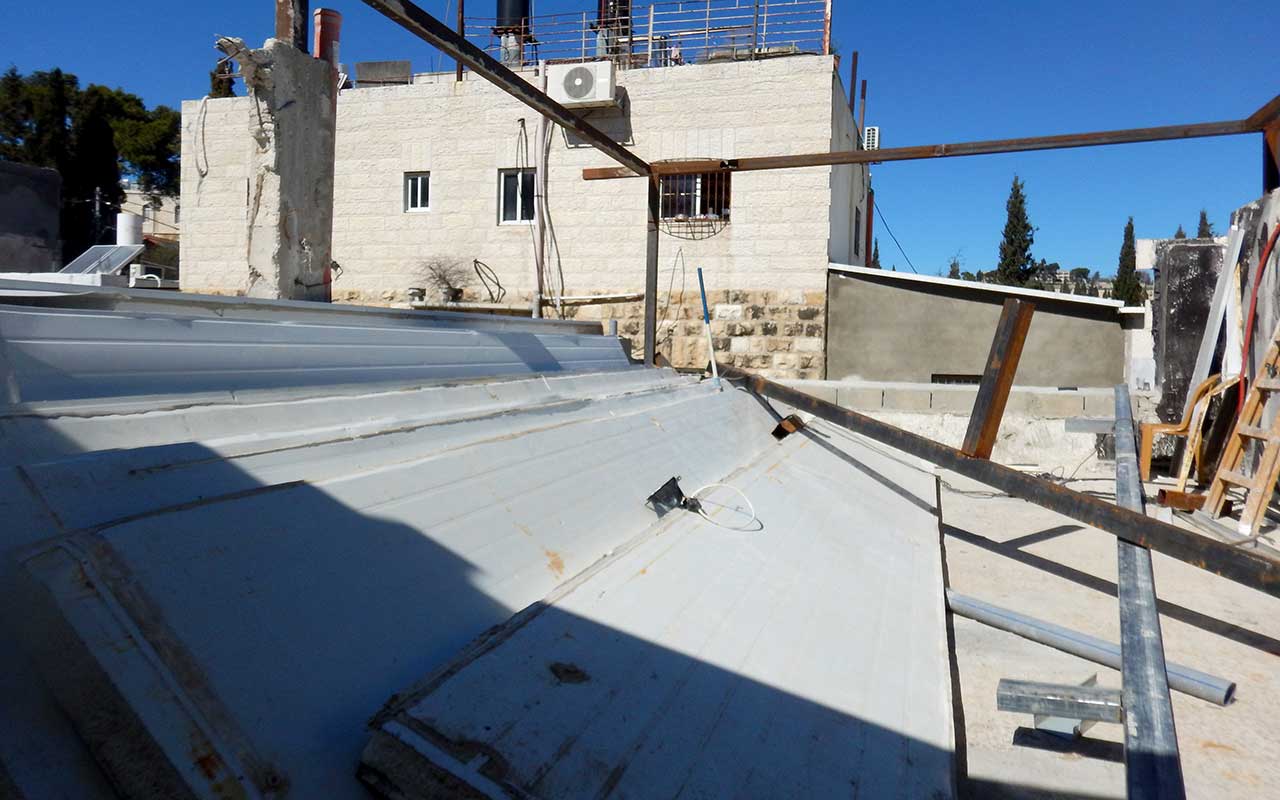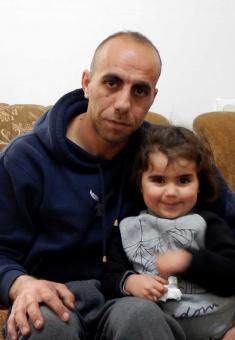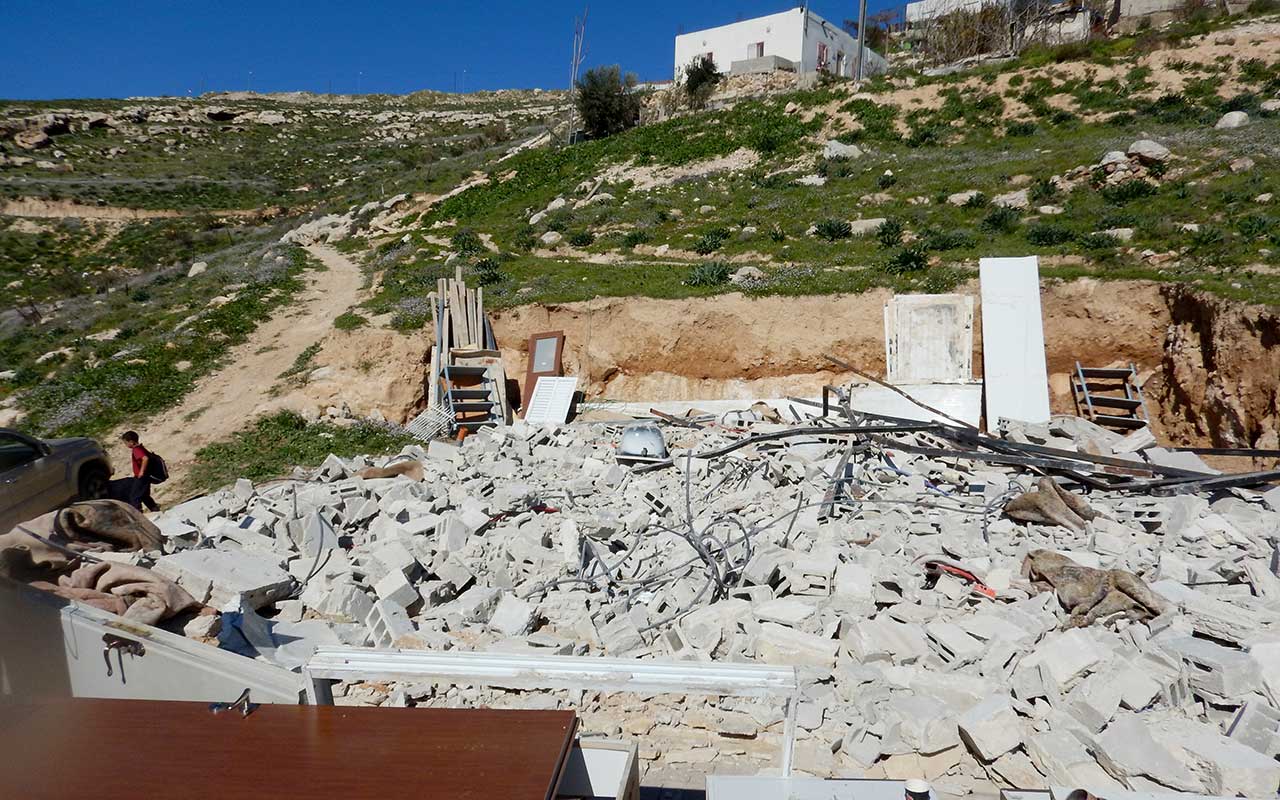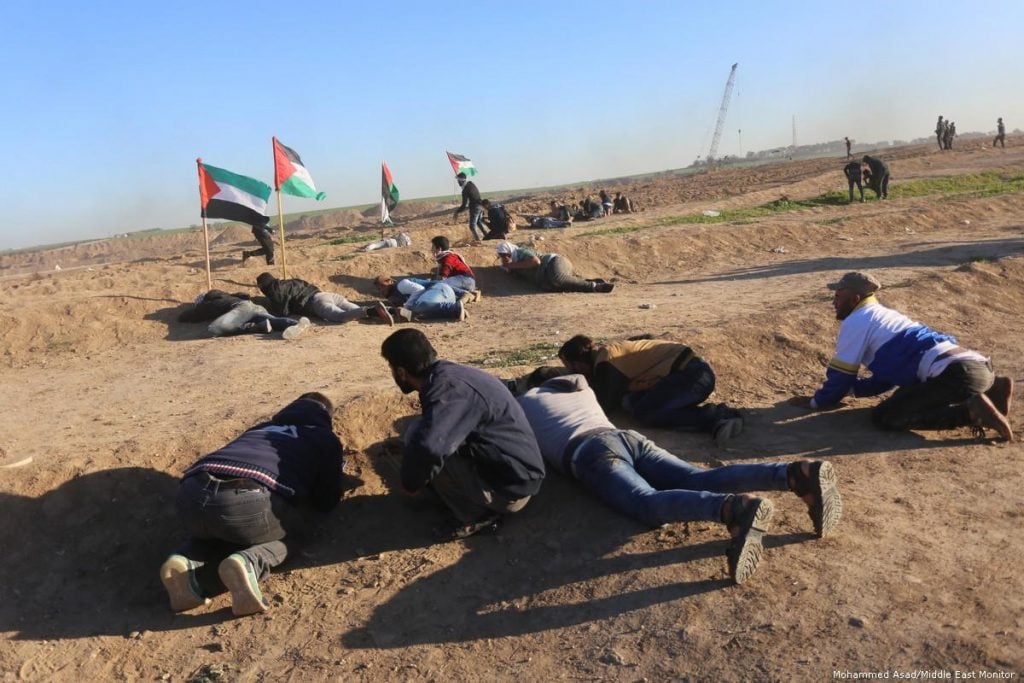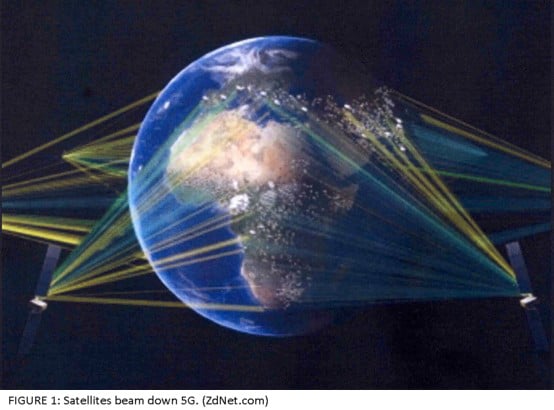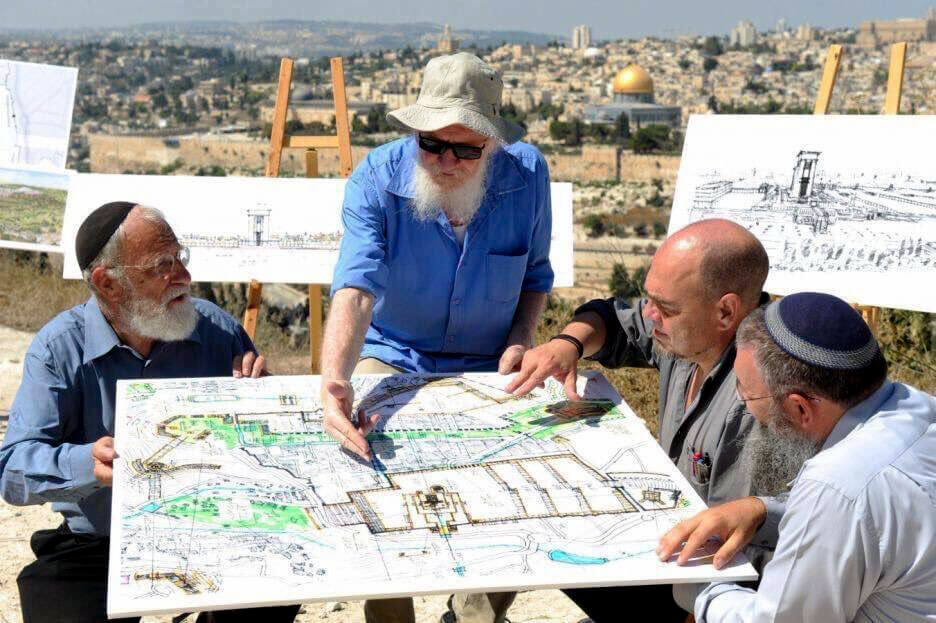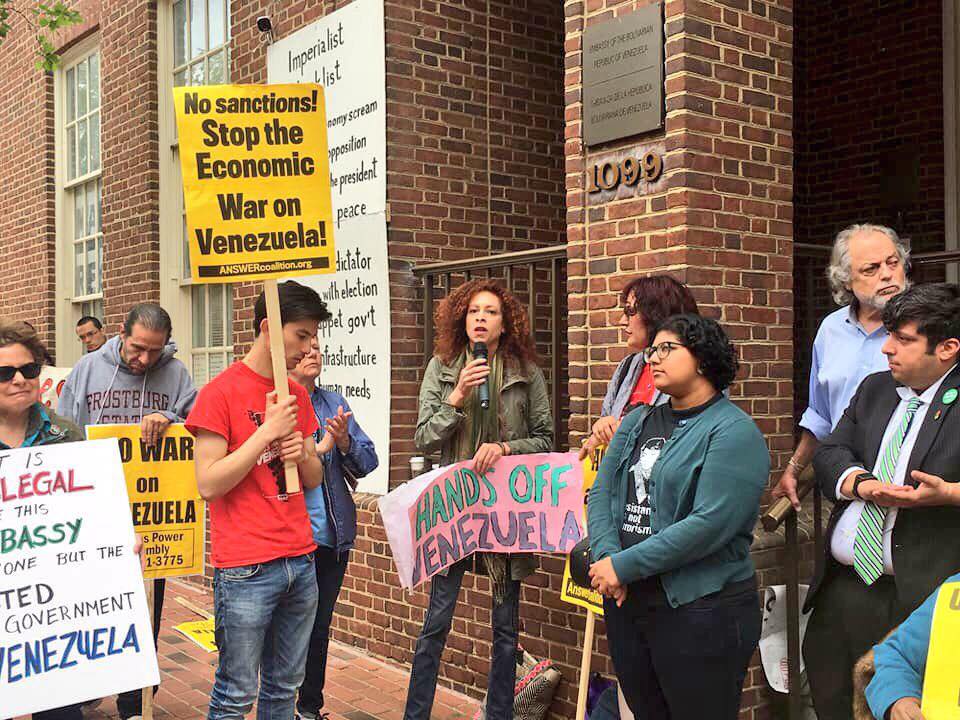Una densa folla, un’atmosfera festosa, giovani nel fiore degi anni, slogan incisivi, humor sottile e corrosivo, la foto di un’affascinante ballerina in posa per la posterità [1], giovani che passeggiano per le strade dopo il corteo, altri che baciano i poliziotti o offrono loro dei fiori, bottiglie d’acqua distribuite ai manifestanti, una coppia che abbozza un passo di danza in una strada di Algeri [2] …
Come non essere fieri di questi giovani algerini colmi di vitalità, che mostrano agli occhi del mondo la loro maturità politica, la loro disciplina e il loro pacifismo?
Come non inorgoglirsi per questo risveglio popolare capace di mettere fine a decenni di immobilismo politico che ha provocato il declino di molti settori socio-economici, provocato la fuga dei cervelli e gettato in mare una coorte di «harraga»?
E allora diciamolo: questa rivolta è benefica come la pioggia dopo la siccità, radiosa come un raggio di sole dopo una notte buia e promettente come un bocciolo che spunta dopo un lungo inverno.
Ma, al di là di queste immagini idilliache della contestazione, sorgono diversi interrogativi a proposito di queste manifestazioni popolari.
Sono spontanee? Com’è possibile che siano così bene organizzate? E’ naturale offrire fiori alle forze dell’ordine in un paese in cui non si usa farlo nemmeno in famiglia? Come si spiega il fatto che i giovani puliscano le strade dopo i cortei mentre gli altri giorni quelle stesse strade sono piene di spazzatura? Chi concepisce gli slogan e chi diffonde, attraverso i media sociali, gli avvisi delle manifestazioni o degli scioperi di studenti in tutto il territorio nazionale e perfino all’estero? Come mai l’ironia e il sarcasmo sono così ampiamente utilizzati come arma di protesta?
Per rispondere a queste domande, e a molte altre, bisogna tornare ai movimenti di contestazione non violenta simili a questo, che hanno scosso diversi paesi dall’inizio del secolo.
Le rivoluzioni colorate

Le rivolte che hanno sconvolto il paesaggio politico dei paesi dell’Est o delle ex Repubbliche sovietiche sono state chiamate «rivoluzioni colorate». La Serbia (2000), la Georgia (2003), l’Ucraina (2004) e il Kirghizistan (2005) ne costituiscono alcuni esempi.
Tutte queste rivoluzioni, conclusasi con successo, hanno avuto per protagonisti dei giovani attivisti locali filo-occidentali, studenti impetuosi, blogger impegnati e insoddisfatti del sistema.
Molti studi e libri hanno trattato questi fenomeni politici. A titolo di esempio, citiamo l’articolo esaustivo e dettagliatissimo sul ruolo svolto dagli Stati Uniti nelle «rivoluzioni colorate», di G. Sussman e S. Krader della Portland State University che riassume il fenomeno in questo modo:
«Tra il 2000 e il 2005, i governi alleati della Russia in Serbia, in Georgia, in Ucraina e in Kirghizistan sono stati rovesciati da rivolte senza spargimento di sangue. Nonostante i media occidentali sostengano in generale che si sia trattato di sollevazioni spontanee, di origine locali e popolari (potere del popolo), le «rivoluzioni colorate» sono invece il risultato di una vasta pianificazione. Gli Stati Uniti, soprattutto, e i loro alleati hanno esercitato sugli Stati postcomunisti un impressionante assortimento di pressioni e hanno utilizzato finanziamenti e tecnologie in funzione di “aiuto alla democrazia [3]” ».
Il coinvolgimento di numerose organizzazioni statunitensi è stato accertato in modo inequivoco. Parliamo della United States Agency for International Development (USAID), della National Endowment for Democracy (NED), dell’International Republican Institute (IRI), del National Democratic Institute for International Affairs (NDI), della Freedom House (FH), dell’Albert Einstein Institution (AEI) e dell’Open Society Institute (OSI) [4],[5].
Queste organizzazioni sono tutte statunitensi e sono finanziate dal governo USA o da capitali privati statunitensi [6]. A titolo di esempio, la NED è finanziata dal Congresso e i fondi vengono getsiti da un consiglio di amministrazione nel quale sono rappresentati il Partito Repubblicano, il Partito democratico, la Camera di Commercio degli Stati Uniti e il sindacato American Federation of Labor-Congress of Industrial Organization (AFL-CIO), laddove l’OSI fa parte della Fondation Soros, dal nome del suo fondatore George Soros, il miliardario statunitense, illustre speculatore finanziario.
Quanto al ruolo della NED, viene utile riprendere la dichiarazione (del 1991) di Allen Weinstein, direttore del gruppo di studio che ha promosso la fondazione di questa organizzazione: «Molto di quello che noi [NED] facciamo oggi veniva fatto segretamente, 25 anni fa, dalla CIA» [7]. Da parte sua, il presidente della NED, Carl Gershman, ha dichiarato nel 1999 che la «promozione della democrazia è diventata un terreno stabile dell’attività internazionale e un pilastro della politica estera statunitense» [8]. Insomma, tutte queste organizzazioni statunitensi sono specializzate nella «esportazione della democrazia», nella misura in cui questo serve alla politica estera degli Stati Uniti.
La NED lavora per il tramite di quattro organizzazioni distinte e complementari che le sono affiliate. Oltre all’IRI e al NDI, ingloba anche il Center for International Private Enterprise (CIPE — Camera di Commercio degli Stati Uniti) e l’American Center for International Labor Solidarity (ACILS — Centrale sindacale AFL-CIO), meglio noto come il Solidarity Center [9].
Diversi movimenti sono stati messi in campo per realizzare le rivolte colorate: Otpor(«Resistenza») in Serbia, Kmara («E’ abbastanza!») in Georgia, PORA («E’ l’ora») in Ucraina e KelKel(«Rinascita») in Kirghizistan.
Il primo, Otpor, è quello che ha provocato la caduta del governo jugoslavo di Slobodan Milosevic. Guidato da Srdja Popovic, Otpor predica l’ideologia di resistenza individuale non violenta, teorizzata dal filosofo statunitense Gene Sharp. Professore emerito di scienze politiche all’Università del Massachusetts, quest’ultimo è stato anche ricercatore a Harvard e sarebbe stato, si dice, un candidato potenziale al premio Nobel per la pace nel 2009 [10], 2012 [11] e 2013 [12].

Srdja Popovic
La sua opera «From Dictatorship to Democracy» (Dalla dittatura alla democrazia) ha ispirato tutte le rivoluzioni colorate. Disponibile in 25 lingue (tra cui l’arabo), il libro può essere scaricato gratuitamente in Internet. Gene Sharp è il fondatore dell’Albert Einstein Institution che, ufficialmente, è una associazione senza scopo di lucro, specializzata nello studio dei metodi di resistenza non violenta nei conflitti. Questa organizzazione è finanziata, tra gli altri, dalla NED, dall’IRI e dall’OSI [13].
I contatti tra AEI e Otpor sono cominciati all’inizio dell’anno 2000. L’applicazione scrupolosa dei principi della resistenza individuale non violenta dettati da Gene Sharp ha permesso la rapida caduta del governo serbo. Si è trattato del primo successo della teoria «sharpiana» sul campo, il passaggio dalla teoria alla pratica.
Forti della loro esperienza nella destabilizzazione dei regimi autoritari, gli attivisti di Otpor, hanno fondato un centro per la formazione di rivoluzionari in tutto il mondo. Esso, il Center for Applied Non Violent Action and Strategies (CANVAS), ha sede nella capitale serba e il suo direttore esecutivo è proprio Srdja Popovic. CANVAS è finanziata, tra gli altri, dall’IRI, da Freedom House, oltre che da George Soros in persona [14].
Uno dei documenti che circolano in rete e che illustra il tipo di formazione fornita da questo centro è «La lotta non violenta in 50 punti» [15], ampiamente ispirata alle tesi di Gene Sharp. Esso indica 199 «metodi di azione non violenta». Possiamo riportarne qualcuno, rispettando la numerazione adottata nel manuale di CANVAS :
- N°6 : Petizioni di gruppi o di massa
- N°7 : Slogan, caricature e simboli
- N°8 : Striscioni, manifesti e pannelli pubblicitari
- N°12a : Messaggerie elettroniche di massa
- N°25 : Mostrare ritratti
- N°28 : Proteste rumorose
- N°32 : Prendere in giro i governanti
- N°33 : Fraternizzare col nemico
- N°35 : Sketch e burle
- N°36 : Teatro e concerti
- N° 37 : Canzoni
- N° 44 : Funerali scherzosi
- N° 62 : Scioperi di studenti
- N° 63 : Disobbedienza sociale
- N° 147 : Non-cooperazione giudiziaria
- N° 199 : Governo parallelo
Gli esperti serbi di CANVAS hanno efficacemente dato una mano agli attivisti in Georgia (2003) e in Ucraina [16] (2004), ma anche in Libano [17] (2005) e alle Maldive (2008) [18]. Hanno anche operato, ma con minore successo, in Albania, in Bielorussia, in Uzbekistan [19], in Iran [20] e in Venezuela [21].
Il logo adottato da Otpor (e poi da CANVAS) è stato molto utilizzato nelle rivolte successive. E’ un pugno stilizzato che è diventato, col tempo, il marchio della formazione CANVAS. E’ stato ampiamente utilizzato dagli attivisti dei paesi summenzionati.
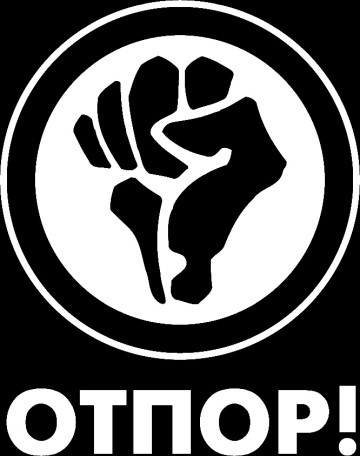 |
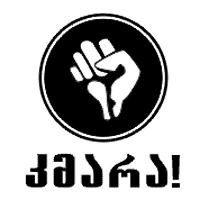 |
| Otpor (Serbia) |
Kmara (Georgia) |
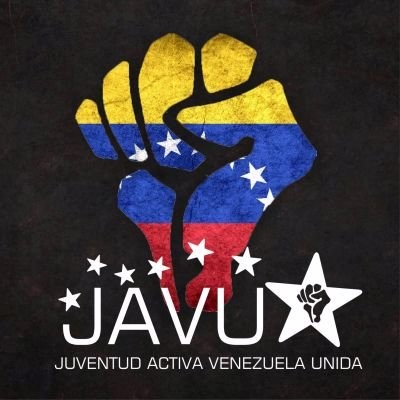 |
 |
| Javu (Venezuela) |
Rivoluzione Verde (Iran) |
Le « primavere » arabe
Le sollevazioni popolari che hanno colpito i paesi arabi alla fine dell’anno 2010, sono null’altro che un prolungamento delle rivoluzioni colorate.
Erroneamente battezzate «primavere» dai media occidentali, hanno ricevuto gli stessi appoggi, gli stessi finanziamenti e lo stesso tipo di formazione [22], con l’aggiunta di uno sviluppo esponenziale delle nuove tecnologie di comunicazione e delle reti sociali.
Quindi, da attivisti, i manifestanti protagonisti delle rivolte si sono trasformati in cyber-attivisti, in quanto la rivolta si è sviluppata più nel cyber-spazio che in quello reale. L’organizzazione, la mobilitazione, gli inviti a manifestare, la sincronizzazione e la diversità delle azioni sul campo non sarebbero mai stati tanto efficaci senza le nuove tecnologie. Wael Ghonim, uno dei più noti attivisti della «primavera» egiziana, ci ha perfino scritto un libro intitolato «Rivoluzione 2.0» [23].
Le organizzazioni di «esportazione della democrazia» hanno aiutato a crare quello che Pierre Boisselet [24], un giornalista francese, ha chiamato «la lega araba del Net». In questo modo, molti attivisti-blogger provenienti da diversi paesi arabi sono stati formati alle nuove tecnologie e messi in rete tra di loro e con degli esperti [25].
Vi sono stati diversi incontri di questa «lega araba», ben prima dell’avvio delle «primavere» arabe (e altre ve ne sono state poi). Ricordiamo, per esempio il secondo «Arab Bloggers Meeting» che ha avuto luogo a Beirut dall’8 al 12 dicembre 2009, cui hanno partecipato più di 60 cyber-attivisti provenienti da 10 paesi arabi [26]. C’erano le «vedette» arabe del Net: i Tunisini Sami Ben Gharbia, Slim Ammamou e Lina Ben Mhenni, gli Egiziani Alaa Abdelfattah e Wael Abbas, il Mauritano Nasser Weddady, il Bahreini Ali Abdulemam, il Marocchino Hisham AlMiraat, il sudanese Amir Ahmad Nasr, la siriana Razan Ghazzaoui, ecc. [27]
 |
 |
 |
| Sami Ben Gharbia |
Alaa Abdelfattah |
Ali Abdulemam |
 |
 |
 |
| Amir Ahmad Nasr |
Hisham AlMiraat |
Nasser Weddady |
 |
 |
 |
| Lina Ben Mhenni |
Razan Ghazzaoui |
Slim Amamou |
Alcuni esponenti della « Lega araba del Net »
E non è tutto. I giganti del Net (Twitter, YouTube, Google, Facebook, ecc.) hanno collaborato col Dipartimento di Stato USA e le organizzazioni di «esportazione della democrazia» per riunire i cyber-attivisti nel 2008, 2009 e 2010 [28]. Lo hanno fatto sotto l’egida dell’AYM (Alliance of Youth Movements), la cui mission è chiaramente spiegata sul suo sito: i) individuare dei cyber-attivisti nelle regioni di interesse; ii) metterli in contatto tra di loro, con degli esperti e degli esponenti della società civile; e iii) sostenere formandoli, consigliandoli e procurando loro una piattaforma per avviare i contatti e svilupparli col tempo [29].
La segretaria di Stato dell’epoca, Hillary Clinton, è intervenuta di persona al summit AYM del 2009. D’altronde quest’ultima ha sempre esaltato le nuove tecnologie durante tutte le «primavere» arabe. «Internet è diventato lo spazio pubblico del XXI secolo»; «le manifestazioni in Egitto e in Iran, alimentate da Facebook, Twitter e YouTube, riflettono la potenza delle tecnologie di connessione quali acceleratori del cambiamento politico, sociale ed economico» ha dichiarato il 15 febbraio 2011 [30].
Oltre all’addestramento per muoversi nel cyber-spazio, alcuni attivisti arabi sono stati iniziati alle tecniche di CANVAS anche per quanto riguarda l’organizzazione delle manifestazioni nello spazio reale. Un caso di scuola è quello dell’Egiziano Mohamed Adel, il portavoce del «Movimento del 6 aprile» [31]. Ha infatti affermato, in un’intervista ad Al Jazeera (trasmessa il 9 febbraio 2011), di avere fatto uno stage da CANVAS nell’estate del 2009, ben prima dei moti di piazza Tahrir [32]. Nell’occasione, prese familiarità con le tecniche di organizzazione delle folle e coi comportamenti da adottare di fronte alle violenze poliziesche: «Ero in Serbia e ho imparato l’organizzazione di manifestazioni pacifiche e i modi migliori per opporsi alla brutalità dei servizi di sicurezza», confidò in questa intervista. Poi fu lui stesso a formare altri formatori [33]. Questa informazione è stata confermata da Srdja Popovic: «Sì, è vero. Abbiamo soprattutto formato dei giovani del Movimento 6 aprile», ha confessato a un giornalista svedese [34].

Mohamed Adel e Srdja Popovic (Serbia, 2009)
Foto estratta dal documentario dal titolo : « Mondo arabo : l’onda d’urto » [35]
E’ per tale ragione che alcuni dei «metodi d’azione non violenta» raccomandati da CANVAS sono stati ampiamente osservati nel corso delle manifestazioni che hanno fatto tremare le piazze arabe. Specialmente il pugno di Otpor, firma di CANVAS, è stato abbondantemente utilizzato dai cyber-attivisti arabi, dall’Atlantico al Golfo.
 |
 |
 |
| Egitto |
Tunisia |
Marocco |
 |
 |
 |
| Libia |
Bahrein |
Siria |
 |
| Algeria |
Algeria 2011: la «primaverizzazione» abortita
Come tutti i paesi arabi della zona MENA «Middle East and North Africa» (letteralmente, «Medio Oriente e Africa del Nord») secondo la classificazione della NED, nemmeno l’Algeria è stata risparmiata dall’ondata «primaverile» del 2011 giacché, bisogna dirselo, questo paese è uno dei (se non il) più oggetto di interesse della regione. Sono stati attivate le stesse reti e le già citate organizzazioni hanno lavorato per «esportarvi la democrazia».
La «primavera» non ha avuto tuttavia presa sulla popolazione algerina a causa, probabilmente, della memoria dolorosa del decennio nero e sanguinoso che tanti lutti aveva provocato in tutta la nazione. Ciò non toglie che gli attori della rivolta siano stati all’opera.
Quella contestazione venne organizzata dal Coordinamento nazionale per il cambiamento e la democrazia (CNCD), che raggruppa diversi partiti politici, ONG e sindacati. Tra i firmatari della prima versione del CNCD (in seguito si è divisa), troviamo la Lega algerina per la difesa dei diritti dell’uomo (LADDH), il Sindacato nazionale autonomo del personale dell’amministrazione pubblica (SNAPAP), il partito «Raggruppamento per la cultura e la democrazia» (RCD), il partito «Fronte delle forze socialiste» (FFS), Fodil Boumala, l’associazione «SOS Disparus» e il Rassemblement Actions Jeunesse (RAJ) [36].
Consultando i rapporti annuali della NED vediamo che la LADDH ha ricevuto sovvenzioni statunitensi nel 2002 [37], 2004 [38], 2005 [39], 2006 [40] e 2010 [41] (guarda la tabella che segue).
|
Ligue Algérienne de Défense des Droits de l’Homme (LADDH)
|
|
ANNO
|
Totale($)
|
|
2002
|
20 000
|
|
2004
|
—
|
|
2005
|
20 000
|
|
2006
|
40 000
|
|
2010
|
37 000
|
Lo SNAPAP, invece, ha stretti rapporti col Solidarity Center (uno dei quattro componenti della NED) come si legge nella pagina «Algeria» del sito di questa organizzazione [42].
Il 4 marzo 2011, agli esordi della «primavera» algerina, la direttrice del Dipartimento Internazionale del Solidarity Center, Cathy Feingold, scrisse una lettera al Presidente Abdelaziz Bouteflika, manifestandogli inquietudine per la violenza poliziesca contro i «manifestanti pacifici» in Algeria e precisando che «noi [il Solidarity Center] notiamo con viva preoccupazione che, tra le persone recentemente rimaste ferite, c’è anche il dirigente sindacale Rachid Malaoui, presidente del settore pubblico dell’Unione Sindacale Nazionale autonoma del personale dell’amministrazione pubblica (SNAPAP)» [43].
Cathy Feingold inviò una seconda lettera al Presidente Bouteflika il 14 ottobre 2011. Il nome del «militante di primo piano del CNCD», M. Malaoui, vi viene citato tre volte [44]. E la signora Feingold sembrava bene informata sulla situazione politica algerina (probabilmente in tempo reale).
Il RCD, invece, è un partito il cui presidente era Saïd Sadi quando le manifestazioni antigovernative riempivano le piazze di Algeri. Il nome di questo politico si trova nel cablo WikiLeaks 07ALGIERS1806 [45], in data 19 dicembre 2007. Il documento mostra che Saïd Sadi ha avuto discussioni politiche abbastanza «spinte» con l’ambasciatore statunitense a Algeri.
Il redattore del cablo aggiunge che Saïd Sadi paragonava il governo del presidente Bouteflika a «una banda di Tikrit», allusione fatta a Saddam Hussein e alla sua regione d’origine in Iraq. L’ex capo del RCD è giunto al punto di chiedere un «sostegno esterno»: «Sadi ha messo in guardia gli Stati Uniti dei pericoli a lungo termine che potrebbero derivare dal silenzio mantenuto su quello che egli percepisce come un deterioramento della democrazia algerina, come hanno dimostrato le elezione locali. Secondo Sadi, un sostegno estero è essenziale alla sopravvivenza della democrazia e al coinvolgimento proficuo dei giovani algerini – 70 per cento della popolazione – nella vita politica ed economica».
Sulla sua pagina Twitter, Fodil Boumala, cofondatore della CNCD, si presenta come «scrittore-giornalista, cyber-attivista, militante dei diritti dell’uomo, oppositore politico indipendente. Fondatore di Res Publica II (ONG) su Facebook & YouTube» [46]. Aggiungiamo che Boumala si è fatto conoscere dal pubblico algerino animando delle trasmissioni politiche alla televisione nazionale algerina.
Il 20 gennaio 2012, una conferenza dal titolo «La primavera araba, un anno dopo: rivolta, ingerenza e islamismo» è stata organizzata a Montreal [47]. Oltre me, gli altri conferenzieri invitati erano Fodil Boumala e Mezri Haddad (da Parigi in collegamento Skype).
Il dibattito è stato assai animato e la discussione molto viva. E’ stato durante una di queste discussioni che Fodil Boumala ha dichiarato che, in uno dei suoi viaggi negli Stati Uniti, era stato ricevuto dal presidente Obama in persona. Vero è che l’amministrazione USA ha facilmente aperto le porte dei suoi uffici più prestigiosi ai cyber-attivisti arabi, che sono stati ricevuti da responsabili di primo piano. Se quanto confessato da Fodil Boumala fosse vero, sarebbe tuttavia uno dei pochissimi ad avere ottenuto un incontro a questo livello di importanza.

Hillary Clinton e il cyber-attivista egiziano Bassem Samir (Washington 2010)
Secondo il sito e-Joussour, «SOS Disparus», questa organizzazione che compare tra i fondatori del CNCD, è «una associazione algerina di sostegno e consulenza giuridica e amministrativa alle famiglie delle migliaia di vittime di sparizione forzata in Algeria […]. «SOS disparus» è stata fondata nel 2001, dopo la nascita, nel 1998, in Francia, del Collettivo delle famiglie degli spariti in Algeria (CFDA) per iniziativa di un piccolo gruppo di famiglie. La nostra associazione lavora in costante collaborazione col CFDA che funge da interfaccia tra le famiglie algerine e le istanze internazionali di protezione dei diritti dell’uomo, come l’ONU o la Commissione africana dei diritti dell’uomo» [48].
Quindi «SOS disparus» lavorerebbe in stretta collaborazione con il CFDA, che è un’associazione di diritto francese registrata a Parigi (Francia).
D’altra parte, sul sito del CFDA, si può leggere che «a settembre 2001, il CFDA è riuscito ad aprire il suo primo ufficio in Algeria, col nome di SOS Disparu(e)s, a strutturare il movimento delle madri degli(delle) spariti(e) e offrire a tutte le vittime assistenza nelle procedure amministrative e giudiziarie, oltre che un’assistenza psicologica. In seguito, un altro ufficio di SOS Disparu(e)s è stato aperto a Orano e diversi comitati di famiglie sono stati creati nel resto del paese» [49].
Deve quindi constatarsi che «SOS disparus» non è alla fine altro se non una «succursale» algerina del CFDA, la sua casa madre francese.
Bisogna anche evidenziare che il CFDA non è sconosciuto alla NED, anzi! Tra tutte le organizzazioni che figurano nella lista «Algeria» della NED, è quella che ha ricevuto con maggiore regolarità sovvenzioni statunitensi. La tabella più sotto le riassume.
|
Collectif des Familles de Disparus en Algérie (CFDA)
|
|
Anno
|
Totale ($)
|
|
2005
|
40 000
|
|
2006
|
43 500
|
|
2007
|
46 200
|
|
2009
|
38 200
|
|
2010
|
40 000
|
|
2011
|
40 000
|
Da precisare che il CFDA e «SOS Disparus» lavorano spesso insieme, in coalizioni che comprendono anche altre associazioni similari, come «Soumoud» e «Djazaïrouna» [50], [51].
Infine notiamo che il RAJ ha ottenuto un finanziamento di 25 000 $ dalla NED nel 2011 [52].
Algeria 2019: la «primaverizzazione» in marcia
Dal 22 febbraio 2019, le piazze algerine conoscono una effervescenza senza precedenti. Qualcuno sostiene addirittura che non si è mai visto niente di simile dopo l’indipendenza del paese. La stampa nazionale e internazionale non lesinano elogi alla maturità politica dei giovani algerini, al loro grande senso dell’umorismo e alla loro organizzazione esemplare.
I media e numerosi «analisti», assidui frequentatori dei salotti televisivi, hanno anche parlato di «spontaneità» della rivolta. Una simile affermazione dimostra incompetenza abissale, memoria corta o faziosità.
- Della spontaneità delle rivolte non violente
«Queste manifestazioni sembrano spontanee. E’ questo che dà loro forza. Tuttavia quasi ogni dettaglio di esse è studiato […]. Qualche ingrediente sapientemente gestito e solo un anno di preparazione si dimostra più efficace delle bombe».
Contrariamente a quanto si potrebbe pensare, queste frasi non hanno niente a che vedere con l’Algeria o le rivolte delle piazze arabe. Esse sono tratte da un articolo scritto nel gennaio 2005 da Régis Genté e Laurent Rouy sulle rivoluzioni colorate [53], le cui conclusioni confermano quelle di G. Sussman e S. Krader, citate all’inizio di questo lavoro [54].
Sempre a questo proposito, ecco il commento di Ivan Marovic, ex attivista serbo di Otpor e formatore di CANVAS: «Le rivoluzioni vengono spesso considerate spontanee. Sembra che della gente sia semplicemente scesa in piazza. Ma sono in realtà il risultato di diversi mesi o anni di preparazione. E’ una cosa noiosissima fino a quando non si raggiunge un certo livello in cui si riesce a organizzare delle manifestazioni o degli scioperi partecipati. Se la cosa viene accuratamente pianificata, nel momento in cui cominciano, tutto si risolve in qualche settimana» [55].
In una delle sue numerose conferenze pubbliche, Sjrda Popovic spiega: «Vi hanno mentito sul successo e la spontaneità delle rivoluzioni non violente. Quando vi capita di vedere un giovane in piazza che fraternizza con la polizia o i militari, qualcuno lo ha organizzato in precedenza» [56].
A proposito delle attuali manifestazioni in Algeria, Michaël Béchir Ayari, ricercatore e analista politico, non crede alla spontaneità del movimento: «A Algeri, sono rari i manifestanti che affermano che questo movimento sia del tutto spontaneo. La maggior parte dice di non farsi illusioni, sapendo bene che vi sono attori nell’ombra appartenenti a diversi settori della società algerina, che alimentano il movimento senza averlo suscitato. Molti di questi partecipano infatti alle proteste o le appoggiano discretamente». [57]
Di fatti, l’apparente spontaneità di questi movimenti popolari è, non solo, «seducente», ma si accompagna sempre ad un effetto sorpresa, e l’incredulità di molti è umanamente comprensibile. Niente infatti eguaglia una bella rivolta spontanea e popolare per l’immaginario collettivo e il romanticismo rivoluzionario. La rivolta di David contro Golia, la rivalsa del debole contro il potente, del popolino armato solo della sua fede contro il tiranno onnipotente…
Eppure l’ex presidente statunitense Franklin D. Roosevelt (1882-1945) ci aveva ben avvertito: «In politica niente accade per caso. Se succede qualcosa, potete scommetterci che era stata programmata».
E il caso algerino non fa certo eccezione, come spiegherò più sotto.
- Della partecipazione di cyber-attivisti algerini alla «lega araba del Net» e ai corsi di formazione di CANVAS
Non c’è alcun motivo perché degli Algerini non debbano essere stati inclusi nel programma di «esportazione della democrazia». L’Algeria è un paese giovane, ricco e geostrategicamente molto importante. Essa è governata da una classe politica che non è diversa dai suoi vicini «primaverizzati», oltre a costituire l’ultimo bastione del «fronte del rifiuto» arabo.
La lista dei partecipanti al secondo «Arab Bloggers Meeting» di Beirut, già citato in precedenza, rivela che vi erano anche dei cyber-attivisti algerini [58]. L’informazione è stata confermata dal celebre cyber-attivista tunisino Slim Amamou, quando gli è stato chiesto se avesse avuto dei contatti o degli scambi di esperienza con altri cyber-dissidenti del mondo arabo, tra cui l’Algeria: «Prima di tutto, c’erano rapporti già prima della rivoluzione [tunisina]. Vale a dire che la rivoluzione non è cominciata nel dicembre 2010. […] E ci si aiuta vicendevolmente […] la rete già esiste. I cyber-dissidenti e gli attivisti egiziani sono nostri amici. E abbiamo amici in Bahreïn, in Siria, in Yemen… In Algeria, io personalmente non ne ho tanti, ma sono certo che ci sono connessioni già attivate […]. Questo, era prima della rivoluzione. Loro ci hanno sostenuto e noi abbiamo sostenuto loro […]. Ed è reciproco: quando c’è bisogno di loro, loro ci sono; quando loro hanno bisogno di noi, noi ci siamo. Ed è tutta una rete, non ci sono frontiere. Dopo la rivoluzione, i rapporti ci sono ancora, e crescono ancora» [59].
In un articolo del New York Times del 13 febbraio 2011, David D. Kirkpatrick e David E. Sanger riferiscono le parole di Walid Rachid, uno degli esponenti del «Movimento del 6 aprile» egiziano: «Tunisi è la forza che ha smosso l’Egitto, ma quel che l’Egitto ha fatto sarà la forza che smuoverà il mondo».
Walid Rachid fa anche menzione del fatto che alcuni esponenti del suo movimento hanno avuto scambi di esperienze con movimenti giovanili smiliari in Libia, in Algeria, in Marocco e in Iran [60].
Per quanto concerne la formazione di CANVAS, Mohamed Adel ha riconosciuto di essere andato in Serbia insieme a quattrodici altri militanti Algerini ed Egiziani [61].
Riassumendo, si può dunque affermare che alcuni attivisti algerini sono stati addestrati alla gestione del cyber-spazio nell’ambito dei programmi di «esportazione della demcorazia» verso il mondo arabo, ma anche alle tecniche di azione non violenta, mantenendo nel contempo solidi contatti coi loro omologhi nei paesi arabi già «primaverizzati».
- Della dualità della comunicazione nelle rivolte non violente
In un articolo a proposito del movimento Otpor, Slovodan Naumovic spiega che l’azione politica di questo movimento consiste nell’elaborare delle campagne di comunicazione dette negative e positive: «Le prime mirano a costruire un capitale di simpatia e di fiducia [verso il movimento] da parte della popolazione. […] Le seconde, dette negative, utilizzano tecniche piene di immaginazione, di humor e di buon umore, e ricorrono spesso alla satira per rendere evidente l’assurdità del regime. L’azione negativa mira a screditare definitivamente il regime di fronte alla pubblica opinione». [62]
Questa dualità è stata ampiamente usata nelle manifestazioni delle piazze arabe, ma anche più recentemente in Algeria
 |
 |
| Algeria 2019 |
Tunisia 2011 |
 |
 |
| Algeria 2019 |
Egitto 2011 |
 |
 |
| Algeria 20192019 |
Tunisia 201111 2011 |
 |
 |
| Algeria 2019 |
Egitto 2011 |
 |
 |
| Algeria 2019 |
Egitto 2011 |
Qualche esempio di campagna negativa
Diverse azioni sono state realizzate sul terreno per dare un’immagine attrenete e simpatica del movimento e, quindi, elaborare una campagna di comunicazione positiva. Citiamo ad esempio l’entusiasmo, il buon umore, l’insistere sul carattere non violento e cordiale delle manifestazioni, la distribuzione di bottiglie d’acqua, la pulizia delle strade dopo le manifestazioni, ecc.
Qualche esempio di campagna positiva
Da notare che questi sono proprio i «metodi di azione non violenta» dettati dal manuale CANVAS, in particolare i numeri 7, 8, 28, 32 e 37.
A proposito del ripulire le strade dopo le manifestazioni, che tanto ha colpito la stampa nazionale e internazionale, bisogna dire che si tratta di una pratica molto usata nelle manifestazioni non violente.
Già nel 2003, il movimento georgiano Kmara aveva fatto della ripulitura delle strade il proprio cavallo di battaglia di campagne battezzate «Clean Up Your Street» e «Clean Up Your Country» («Ripulite le vostre strade» e «Ripulite i vostri paesi»). Tali obiettivi semplici e pratici hanno tutti contribuito alla divulgazione delle finalità del movimento KMARA, rendendolo popolare in pochissimo tempo [63].
Più prossimi all’Algeria, anche gli attivisti egiziani sono ricorsi a questo metodo per attirarsi la simpatia del popolo e dare un’immagine positiva del movimento.
Chi conosce l’Egitto (e il Cairo in particolare) sa che la pulizia delle strade è stato il peggior fallimento dei vari governi del paese. Vedere dei giovani che puliscono le strade, non solo evidenzia l’incompetenza del governo, ma evoca il sogno di un futuro pulito, sano e di radiosa felicità.
E’ un po’ il caso anche dell’Algeria, dove la pulizia delle città lascia a desiderare, per non dire altro.
Pulizia delle strade dopo le manifestazioni (Egitto 2011)
- Della fraternizzazione col «nemico» nelle rivolte non violente
Nel vocabolario di CANVAS, la non violenza ha per nemico le istituzioni cui è affidato l’uso della violenza nei regimi autocratici, in questo caso è la polizia e l’esercito. Per Sjrda Popovic, è indipensabile che i manifestanti non abbiano un’immagine minacciosa e aggressiva contro i pilastri della forza che sono la polizia e i militari: «Fin dagli esordi, abbiamo sempre tentato di fraternizzare con la polizia e l’esercito, offrendo loro fiori e dolci, piuttosto che gridare e lanciare pietre. Questo modello ha funzionato efficacemente nel mondo intero, soprattutto in Georgia e in Ucraina. Una volta che si sia compreso che i poliziotti sono solo degli uomini in uniforme, la percezione cambia e la persuasione opera». [64]
Come ha chiarito Popovic, quest’azione di simpatizzare coi detentori della forza è efficacissima e conforme ai principi della lotta non violenta. Ecco qualche immagine di distribuzione di fiori.
 |
 |
| Serbia 2000 |
Georgia 2003 |
 |
 |
| Ucraina 2004 |
Kirgizistan 2005 |
Le rivoluzioni colorate
 |
 |
| Egitto |
Tunisia |
 |
 |
| Yemen |
Bahrein |
Le “primavere” arabe
Algeria 2009
E la fraternizzazione non si limita a offrire fiori
Fraternizzazione col “nemico” (Algeria 2019)
Queste due ultime foto sono da confrontare con le seguenti
 |
 |
|
Tunisie 2011
|
Serbie 2000
|
- Del’humor nelle rivolte non violente
Uno dei caratteri più evidenti delle manifestazioni algerine è certamente quella dell’humor. Cartelloni, slogan e accorgimenti testimoniano di una creatività senza limiti e di uno spiccato senso dell’humor.
Eppure questo tratto di carattere non è davvero proprio all’Algeria: fa parte integrante dei metodi di protesta utilizzati nella lotta non violenta.
Sjrda Popovic considera l’humor come uno strumento potentissimo: «L’humor fa davvero male perché quei tizi là si prendono sul serio. Quando cominciate a burlarvi di loro, questo fa male», [65]
Secondo il direttore di CANVAS, «[La creatività e l’humor sono] assolutamente cruciali. L’humor e la satira, marchio di fabbrica di Otpor, sono riusciti a far passare un messaggio positivo, ad attirare un pubblico il più ampio possibile e a dare ai nostri avversari – quei burocrati dalla testa grigia e squadrata – un’aria stupida e ridicola. Cosa ancora più importante, è riuscita a spezzare il clima di paura e ispirare la società serba esausta, delusa e apatica della fine degli anni ‘90». [66]
Humor (Algeria 2019)
Questo humor è apparso anche nei paesi arabi che hanno avuto dei movimenti di contestazione. Ecco qualche esempio egiziano.
Humor (Egitto 2011)
Un autro tipo di humor, questo più funebre, è indicato al numero 44 e si chiama «Simulacro di funerali» nel manuale di CANVAS. E’ stato utilizzato in Algeria il 1° marzo 2019, per simulare i funerali del presidente Bouteflika avvolto in una bandiera marocchina:

L’analisi della varie azioni realizzate durante le manifestazioni algerine dimostra che anche altri punti della lista dei «199 metodi di azione non violenta» di CANVAS sono stati utilizzati sul campo. Sarebbe però noioso enumeralrli qui tutti.
- Dei recenti finnziamenti della NED
Dopo lo scandalo delle rivelazioni sui finanziamenti concessi agli attivsiti arabi dalla NED e da altre organizzazioni di «esportazione» della demcorazia durante la «primavera» araba, si sarebbe pensato cher questi «banchieri della rivolta» avessero cessato le loro attività o, almeno, avessero cominciato ad agire con maggiore discrezione. Non è così.
L’ultimo
rapporto annuale della NED, per il 2018 sull’Algeria, dimostra che sono state finanziate 3 organizzazioni algerine (vedi la tavola seguente).
| Organizzazione |
Totale ($) |
| Center for International Private Enterprise (CIPE) |
234 669 |
| Fédération Euro-Méditerranéenne Contre les Disparitions Forcées |
30 000 |
| Associazione Djazairouna |
26 000 |
Finanziamenti NED 2018 (Algeria)
Sul sito ufficale del CIPE [67], si legge:
«Il CIPE è uno dei quattro istituti principali del National Endowment for Democracy e una filiale della US Chamber of Commerce.[…] Al CIPE, pensiamo che la democrazia sia al massimo quando il settore privato è in piena espansione. Collaborando coi nostri partner locali, associazioni professionali, camere di commercio, gruppi di riflessione, università e organizzazioni per la difesa dei diitti, il CIPE contribuisce a creare un ambiente favorevole alla prosperità delle imprese. Questo può accadere solo se le istituzioni fondamentali della demcorazia sono forti e trasparenti. Noi siamo a disposizione per dare una mano a costruire queste istituzioni. E’ la nostra mission, è la nostra forza».
Quindi si capisce bene che il CIPE è anche una organizzazione che ha per missione l’«esportazione della democrazia».
In Algeria il CIPE ha relazioni anche col think tank CARE (Circolo di Azione e Riflessione sull’Impresa) :
«In Algeria, questa organizzazione locale è partner storico di CIPE, CARE (il circolo di azione e riflessione sull’impresa), un’associazione di imprese e think tank algerini. Le consultazioni hanno rivelato che, a differenza di molti altri paesi in cui il CIPE opera, il consenso sui problemi in Algeria è prossimo al 100%» [68]
La «Fédération Euro-Méditerranéenne Contre les Disparitions Forcées» (FEMED) è un’organizzazione internazionale con sede in Francia. Raggruppa 26 associazioni di 12 diversi paesi. In Algeria le associazioni affiliate sono il CFDA, «SOS Disparus», Djazaïrouna e Somoud [69].
La presidente della FEMED è Nassera Dutour, fondatrice e (attualmente) portavoce del CFDA.
E’ superfluo ricordare che il CFDA e «SOS Disparus» sono stati membri attivi del CNCD nel 2011.
Più recentemente, a margine della rivolta popolare algerina, è nato un collettivo di organizzazioni dal nome «Collettivo della società civile algerina per un’uscita pacifica dalla crisi». Tra i componenti di questo gruppo, ritroviamo: la LADDH, il RAJ, Djazaïrouna, Somoud, «SOS Disparus» e lo SNAPAP [70].
Tutte queste organizzazioni hanno (o hanno avuto) rapporti con la NED.
- Del ruolo del cyber-spazio nelle rivolte non violente
Va da sé che è lo spazio reale ad essere il teatro degli eventi e che è in questo spazio che si vince o si perde. Ecco cosa dice in proposito Sjrda Popovic: «La lotta non violenta si vince nel mondo reale, nelle piazze. Non riuscirete mai a cambiare la vostra società in senso democratico restando solo seduti a cliccare» [71].
Tuttavia l’uso del cyberspazio, questo spazio etereo e liberato, ha permesso di coordinare gli sforzi, organizzare le azioni da realizzare sul campo, condividere le informazioni e trasmettere le istruzioni perché le manifestazioni si uniformino ai principi di base della lotta non violenta, come spiegato in precedenza.
Inoltre le campagne positive e negative descritte prima si realizzano in internet, attraverso le reti sociali. A dire il vero, le azioni di questo tipo lanciate nel cyber-spazio sono state più numerose e virulenti di quelle realizzate nello spazio reale. Il cyber-spazio infatti non dorme e non ha limiti temporali e geografici. I video, le canzoni, le parodie delle canzoni, gli sketch e i clip adattati sono stati (e sono sempre) assai efficaci.
In proposito, occorre evidenziare che taluni video non avevano nulla di amatoriale, Al contrario, sono stati realizzati da professionisti e hanno certamente richiesto un supporto materiale e finanziario.
- E’ vietato insultare o ingiuriare
- Occorre evitare slogan religiosi/razzisti/regionali
- E’ vietata ogni forma di violenza o vandalismo
- E’ assolutamente vietato indossare passamontagna
- Tutti devono avere la bandiera nazionale
- Usate il telefono in posizione orizzontale e realizzate dei video di 1-2 minuti da inviare alle pagine
- Portate delle bottiglie di acqua + dell’aceto [73], nel caso vengano usati gas lacrimogeni
- Ripulite le strade dopo la manifestazione
- Non dimenticate di scaricare l’applicazione VPN per evitare l’interruzione di Internet
E’ interessante notare che l’inizio e la fine del video sono punteggiati da espressioni che indicano la medesima appartenenza a un gruppo: «i nostri obiettivi», «la nostra causa», ecc.
Alla fine il video termina con una firma: il pugno di Otpor «algerinizzato».

Il potere della gente
D’altronde lo stesso pugno è stato utilizzato negli appelli a partecipare alle manifestazioni (proprio come nel 2011) e in manifesti e striscioni:
Questo video ricorda le analoghe direttive del «Movimento del 6 aprile», trasmesse via internet o distribuite ai manifestanti in piazza Tahrir, di cui ecco qualche esempio:
Alcune linee guida messe a disposizione dei manifestanti egiziani (2011)
- Della longevità politica dei cyber-attivisti dopo la «rivoluzione»
Tanto il metodo della lotta non violenta è di temibile efficacia per ottenere la destituzione degli autocrati, tanto esso non ha alcuna incidenza negli avvenimenti successivi.
In un articolo sulle rivoluzioni colorate scritto nel 2007 dal giornalista Hernando Calvo Ospina su Le Monde diplomatique, si legge: «In questi paesi di “socialismo reale”, la distanza tra governanti e governati facilita il compito della NED e della sua rete di organizzazioni, che fabbricano migliaia di “dissidenti” grazie ai dollari e alla pubblicità. Una volta ottenuto il cambiamento, però, la maggior parte di loro, e anche le loro organizzazioni di appartenenza, spariscono senza gloria dalla circolazione» [74].
Proprio come i loro «colleghi» che sono stati protagonisti delle rivoluzioni colorate, i cyber-attivisti arabi sono spariti dalla scena politica. La loro rapida evanescenza si deve al fatto che essi non dispongono di alcuna «competenza» (e dunque di alcuna utilità) negli eventi che seguono la caduta dei regimi. Occorre comprendere che la formazione dei dissidenti da parte delle organizzazioni statunitensi di «esportazione» della demcorazia è centrata esclusivamente sulla denuncia della stupidità dei regimi, senza nulla insegnare in termini di azione politica successiva.
In Tunisia, il cyber-attivista Slim Amamou è stato nominato segretario di Stato per i giovani e lo sport tre giorni dopo la fuga del presidente Ben Ali, nel primo governo Ghannouchi [75] post-benaliano. Comprendendo questo governo ancora molti ex ministri del presidente deposto, è stato accusato di essere un venduto [76]. E’ stato criticato in Internet per non essersi dimesso, come altri avevano fatto.
In Egitto, Ahmed Maher (cofondatore del «Movimento del 6 aprile») e Mohamed Adel sono stati arrestati a dicembre 2013 per non avere rispettato una legge anti-manifestazioni promulgata il mese precedente [77]. A marzo 2014, sono comparsi dinanzi la Corte di Appello di fronte alla quale avevano impugnato la condanna a tre anni di prigione loro inflitta, accusando i carcerieri di averli picchiati e maltrattati [78]. Ma invano: la pena inflitta ai due leader del «Movimento del 6 aprile» è stata confermata il mese successivo [79]. Sempre sulle rive del Nilo, il cyber-dissidente Alaa Abdelfattah è stato da poco scarcerato, dopo 5 anni di prigione [80].
La figura più in vista della contestazione yemenita, Tawakkol Karman[81], è in un triste esilio in Turchia mentre il suo paese viene messo a ferro e a fuoco. Va solo evideniato che il suo Premio Nobel gli ha almeno guadagnato l’ottenimento della nazionalità turca.

Mano nella mano: Tawakkol Karman e Hillary Clinton Foto scattata al Dipartimento di Stato (Washington), il 28 ottobre 2011
In Siria, uno degli attivsti più in vista nei media occidentali era Radwan Ziadeh [82]. Membro del Consiglio Nazionale Siriano (CNS) e finanziato dalla NED, questo dissidente ha rischiato di essere espulso dagli Stati Uniti (dove vive) perché la sua richiesta di asilo era stata respinta nel 2017 [83].

Hillary Clinton e Radwan Ziadeh
L’analisi degli eventi che hanno seguito sia le rivoluzioni colorate che le «primavere» arabe dimostra in modo chiarissimo che l’ideologia di resistenza individuale non-violenta sviluppata da Gene Sharp è eficace – quando funziona – solo nel rovesciamento degli autocrati. E’ per contro assai debole nella misura in cui non riesce a gestire in alcun modo il caos provocato da questo tipo di sconvolgimento politico. Non appena si esaurisce il ruolo attribuito agli attivisti, sono le forze politiche in campo, alla ricerca di qualsiasi cambiamento importante, ad occupare il vuoto creato dalla caduta del vecchio potere.
La rivolta tunisina, che pure era stata definita giovane, dinamica e «facebookiana», ha prodotto un presidente attuale che, con i suoi oltre 92 anni, è il più vecchio presidente del mondo.
In Egitto, il governo di tipo militare ha ridotto le libertà individuale molto più di quanto non avesse fatto il presidente Mubarak.
Lo Yemen, la Libia e la Siria sono paesi distrutti e i loro abitanti soffrono chi la violenza, chi l’insicurezza, chi l’esilio.
Questo vuol dire che le manifestazioni algerine ci porteranno al caos? Che non avevano giustificazioni? Che i giovani hanno torto a cercare di sbullonare gli autocrati che hanno congelato il paese in un letargo morboso?
Certamente no. Salvo che la storia mostra che le rivolte non violente non danno i risultati attesi perché esse perseguono interessi diveri da quelli del paese. E’ dunque assai importante fare in modo che questa contestazione popolare sia fondamentalmente autoctona e persegua solo ed esclusivamente gli interessi dell’Algeria.
- Dell’elezione alla moda del «mi piace»
Dall’inizio delle manifestazioni, i nomi di persone candidate a «guidare il destino del paese» hanno inondato il cyber-spazio. Alcuni hanno avanzato una pedina, altri un’altra come se si trattasse di votare per un candidato di un reality show. Nessun programma presentato, nessun progetto spiegato né alcun embrione di agenda politica. I messaggi, le foto e i video condivisi a sazietà (probabilmente da troll cyber-attivisti), hanno elevato alcuni personaggi al rango di supremi salvatori della nazione.
E perché non proporre un governo chiavi in mano, visto che ci siamo? E’ quanto è stato proposto dal Comotato di inziativa e vigilanza civica (CIVIC) sul quotidiano El Watan mentre paracadutava il direttore del suddetto giornale al posto di Ministro della libertà di espressione [84]! Un nuovo ministero su misura, non è vero? Conoscendo l’impegno di questo giornale nella «primaverizzazione» dei paesi arabi, c’è da chiedersi che cosa sarà la vera espressione della libertà.
Sulla stessa lista compare un nome idolatrato da tutte le brave persone del cyber-spazio: il signor Mustapha Bouchachi. Sconosciuto dal grande pubblico solo qualche settimana fa, eccolo catapultato alle massime funzioni in termini di potenzialità.
In realtà il signor Bouchachi è stato presidente della LADDH dal 2007 al 2012 e i rapporti della NED mostrano che questa lega è stata finanziata quando lui era presidente (nel 2010).
D’altra parte il suo predecessore alla testa della LADDH, il signor Hocine Zahouane, l’ha accusato di avere rapporti col Dipartimento di Stato USA: [85]
«Il signor Bouchachi è stato invitato dal Dipartimento USA per gli affari esteri a recarsi in Turchia e in Oman per assistere ai chiarimenti forniti da Condoleezza Rice e Saud Al Fayçal sulla politica statunitense del Grande Medio Oriente».[86]
In questo governo di fantasia, il portafoglio della Cultura e delle Arti spetta a null’altri se non allo scrittore Kamel Daoud. Quello stesso che aveva definito i suoi compatrioti degli «stupratori potenziali» nella vicenda di Colonia e che si era posto la domanda «In che cosa i musulmani sono utili all’umanità?»[87], oggi non smette di lodare i manifestanti esaltandone l’educazione, l’ordine, il senso ecologico, il rispetto per gli altri e, soprattutto, l’assenza di molestie sessuali durante le manifestazioni [88]. Non aveva sostenuto che il «mondo detto’arabo’ è un peso morto per il resto dell’umanità»? E di quale cultura deve diventare il difensore e promotore? Di quella che prima denigrava?
Queste tre persone non sono certo le uniche i cui nomi e i cui video si incongtrano nel cyber-spazio, anzi! Alcuni ex esponenti del CNCD oltre che alcuni noti islamisti sono venuti fuori dalla loro ibernazione politica, cavalcando l’onda della contestazione e agitandosi al suono degli «Irhal» e «Vattene».
I media sociali ci hanno quindi inondato di «candidature» improbabili come quelle di animatori di talk-show o di commentatori sportivi, come se la capaictà di governare un paese si misurasse sulla forza delle onomatopee emesse quando viene segnato un goal.
Mentre l’Algeria vive dei momenti critici, questa corsa alle poltrone e questi cambi di casacca per ragioni economiche sono assolutamente indecenti. Non è possibile criticare un sistema elettorale basato sulla «chkara» [89] e pretendere di sostiuirlo con un altro basato sui «like».
Conclusioni
Le manifestazioni pacifiche che hanno scosso il nostro paese e che hanno messo a dura prova il deleterio «sistema» che lo governava hanno evidenziato un volto assai positivo dei nostri giovani. Riuscire a «cacciare» un potere politico moribondo nella gioia e nel buon umore, senza alcun incidente di rilievo, è non solo esemplare, ma anche salutare per l’avvenire dell’Algeria.
Tuttavia il modus operandi di queste manifestazioni, conforme ai principi fondamentali della lotta non violenza di CANVAS mostra che, 19 anni dopo la Serbia e 8 anni dopo l’inizio delle «primavere» arabe, l’Algeria registra a sua volta una rivoluzione colorata. Questo modo di operare testimonia anche dell’esistenza di un gruppo di cyber-attivisti che sono stati formati dalle officine di «esportazione della democrazia» e che sono attive tanto nello spazio fisico che nel cyber-spazio.
E l’unica risposta a questo cartello (“Questa non è una Rivoluzione colorata”):

“Questa non è una Rivoluzione colorata”
è il celebre quadro di René Magritte (“Questa non è una pipa”):

Questo gruppo, insieme a talune ONG algerine, devono capire che il fatto di lavorare per interessi diversi da quelli del proprio paese può solo portare al caos, e gli esempi sono numerosi.
Quando nel 2000 venne chiesto a un giovane militante serbo di Otpor la sua opinione sugli Stati Uniti – che avevano aiutato e formato il movimento -, rispose di essere contro questo paese, ma che non lo disturbava troppo essere parzialmente controllato dalla CIA [90]. Un punto di vista leggermente diverso da quello di Slim Amamou che ha riconosciuto anch’egli di essere stato aiutato dagli USA, ma ha aggiunto che «se ne fotteva completamente» della CIA [91].
Che ingenuità! I finanziamenti concessi da queste organizzazioni «democratizzanti» non hanno ninete di filantropico, ma producono vantaggi per i paesi donatori. Una volta che la gente accetta il denaro, accetta anche le condizioni che lo accompagnano.
Secondo diversi osservatori, gli interessi a beneficio dei quali lavorano i cyber-attivisti possono essere sia interni che esteri (o una combinazione di entrambi). In tutti i casi, l’interesse del nostro paese deve essere posto al di sopra di ogni altra considerazione.
L’analisi della «rivoluzioni» non violente negli altri paesi dimostra che la fase che segue la caduta del tiranno è molto più delicata della precedente. E’ da essa che dipende il successo o il fallimento di una rivolta. L’arroganza, la testardaggine e l’ostinazione sono pessimi consiglieri in questo periodo.
Facciamo in modo che questa sollevazione popolare si concluda con successo, e che una nuova Algeria sorga. Un’Algeria piena di promesse per un popolo che tanto vi ha sperato.

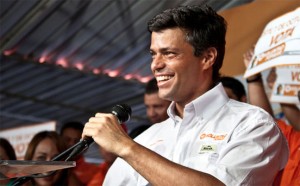




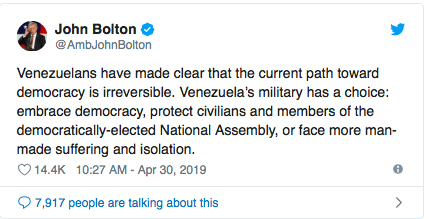
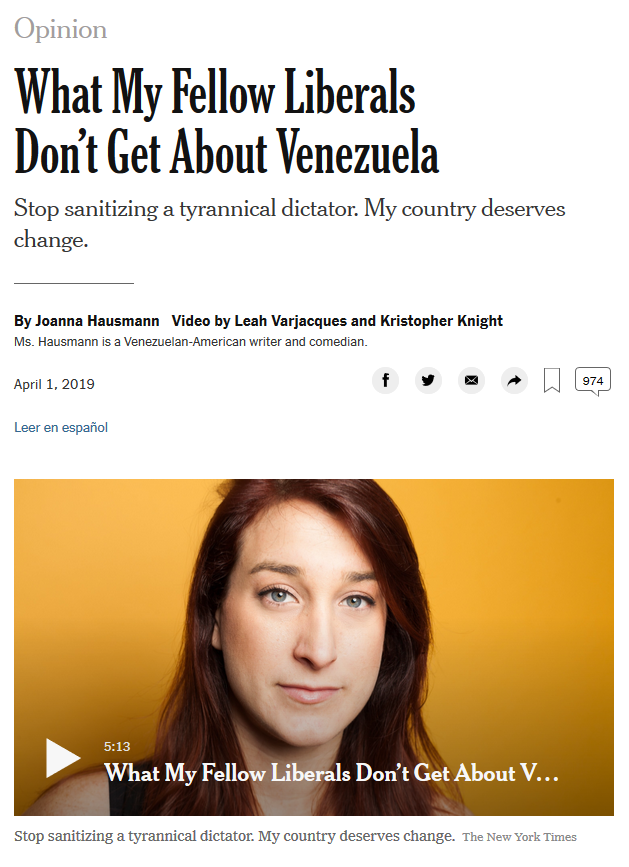












































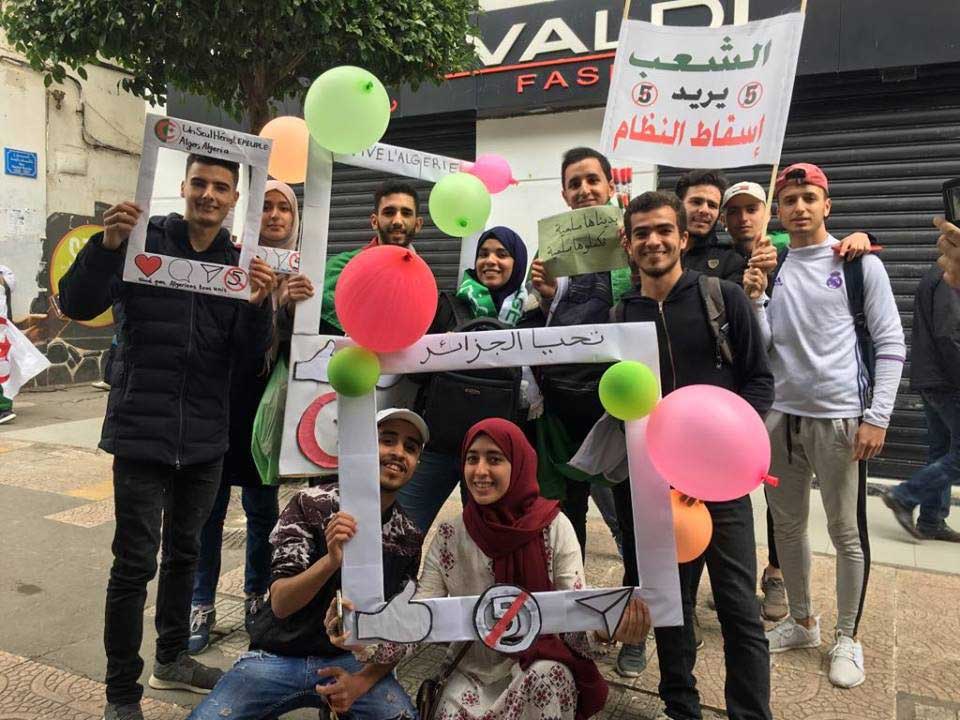



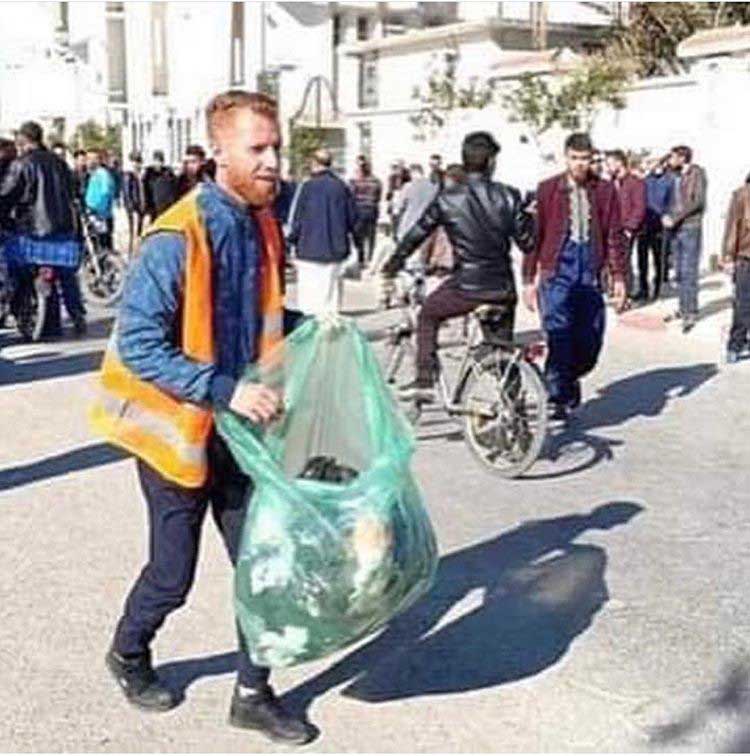
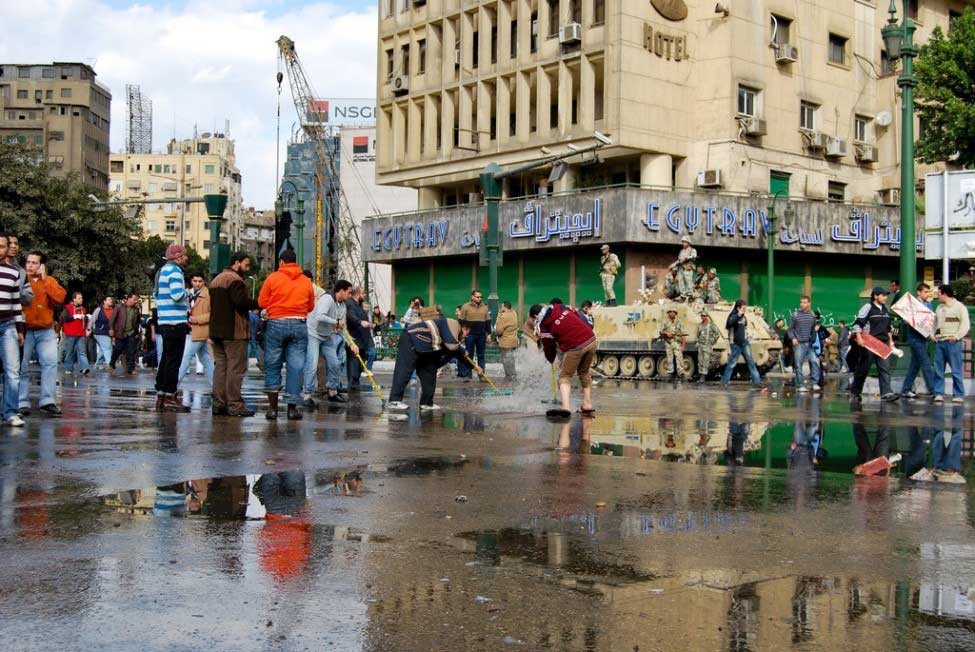
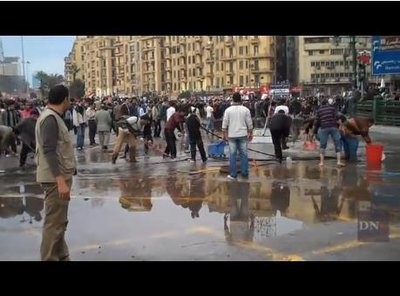








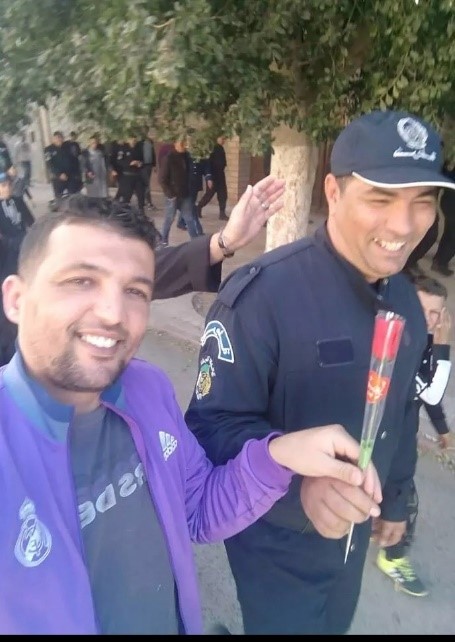
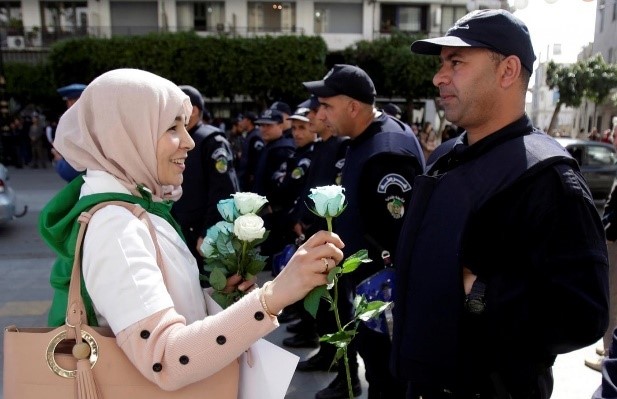
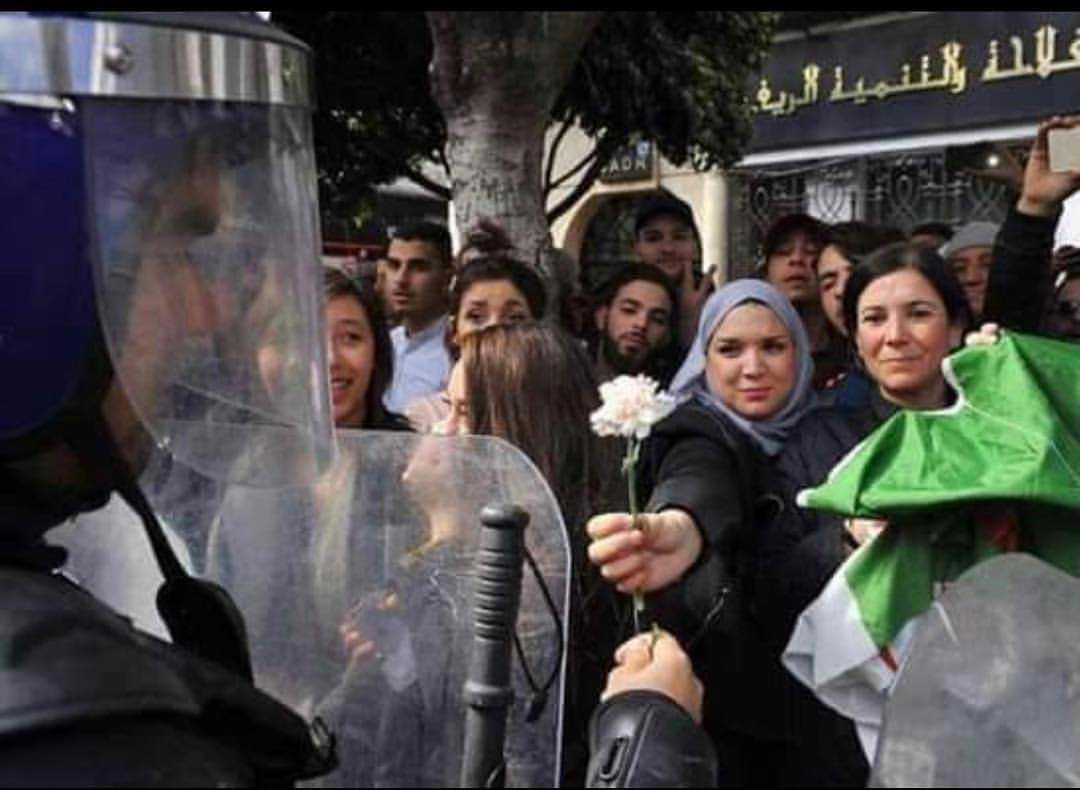
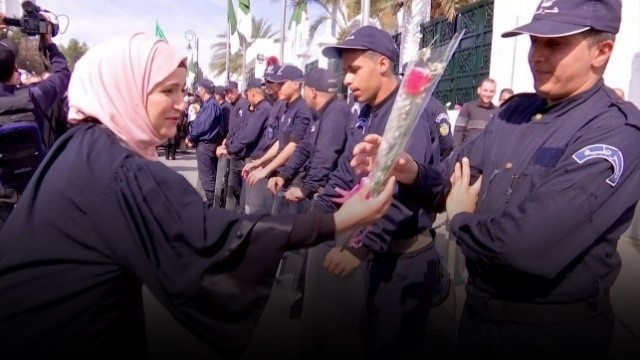
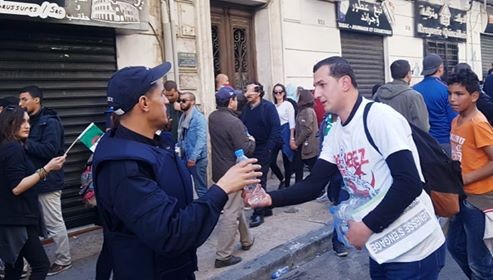
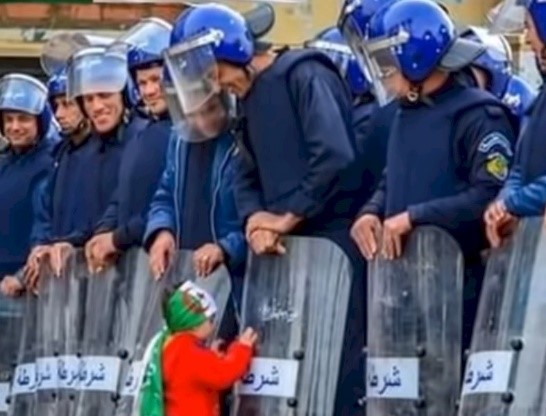
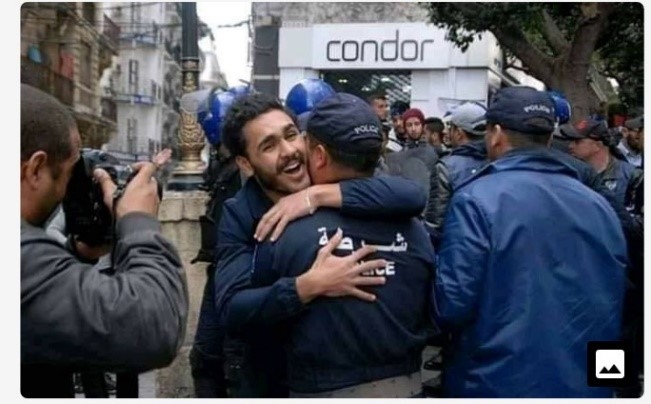



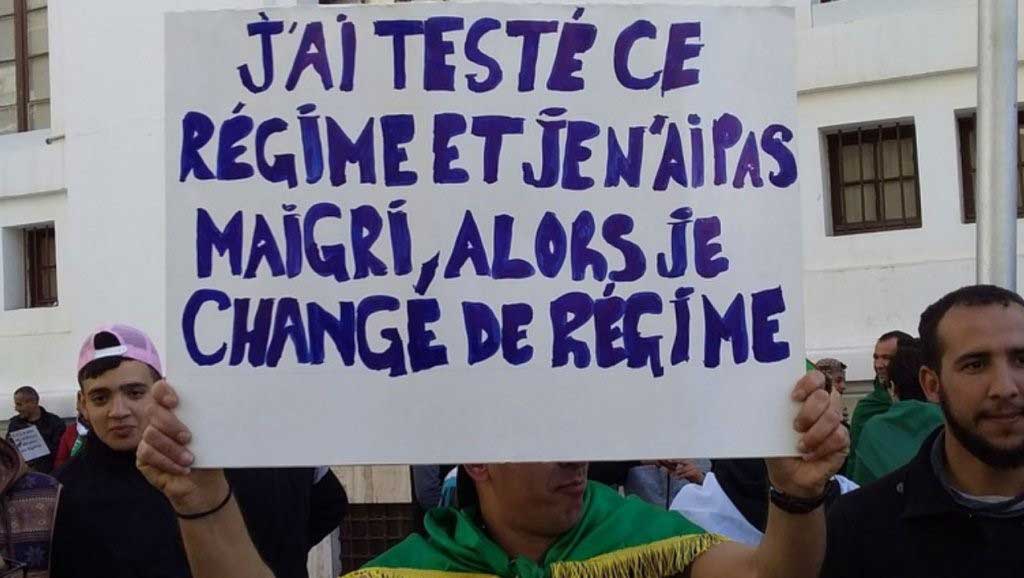
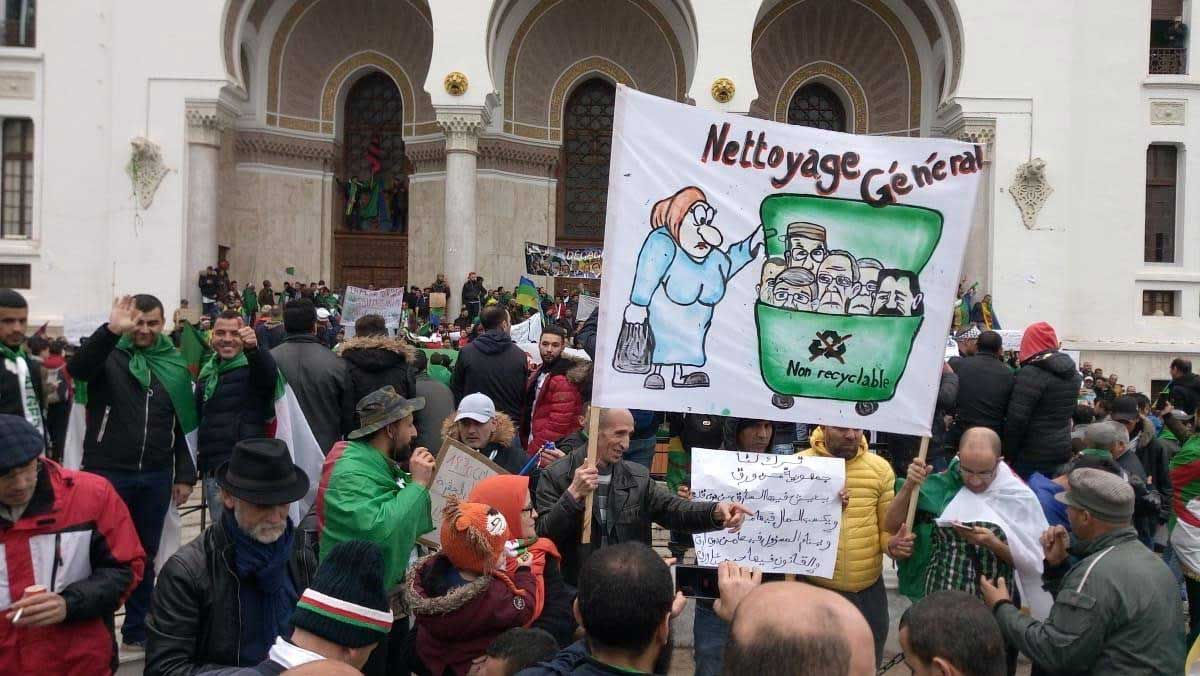
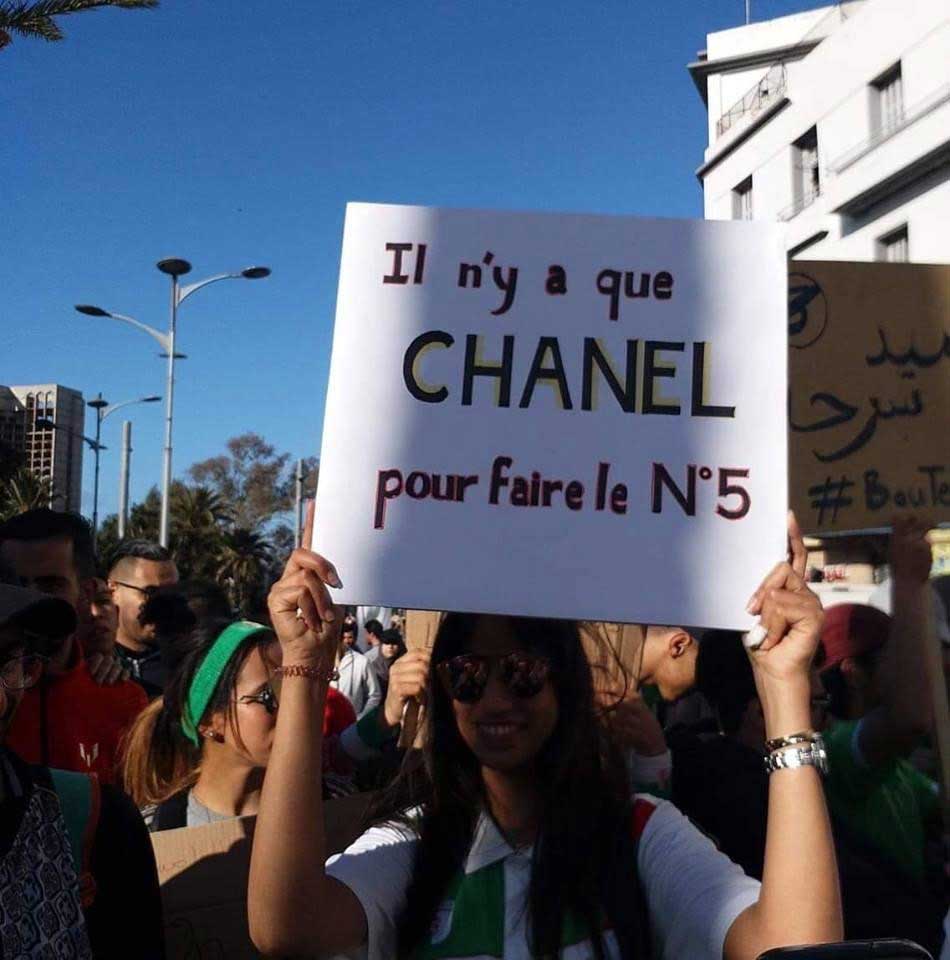
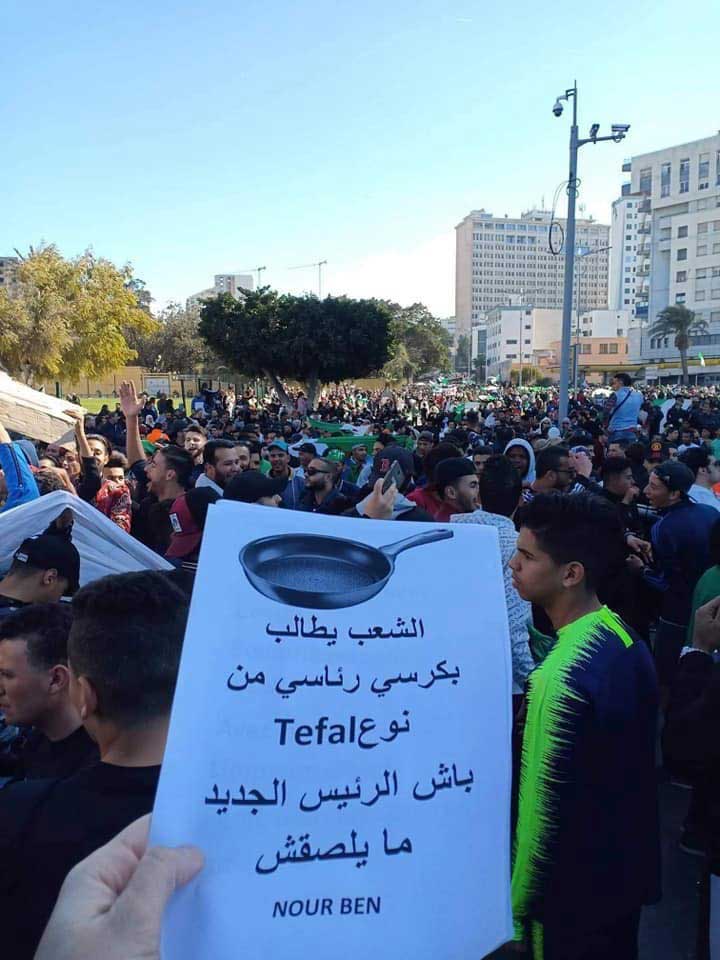
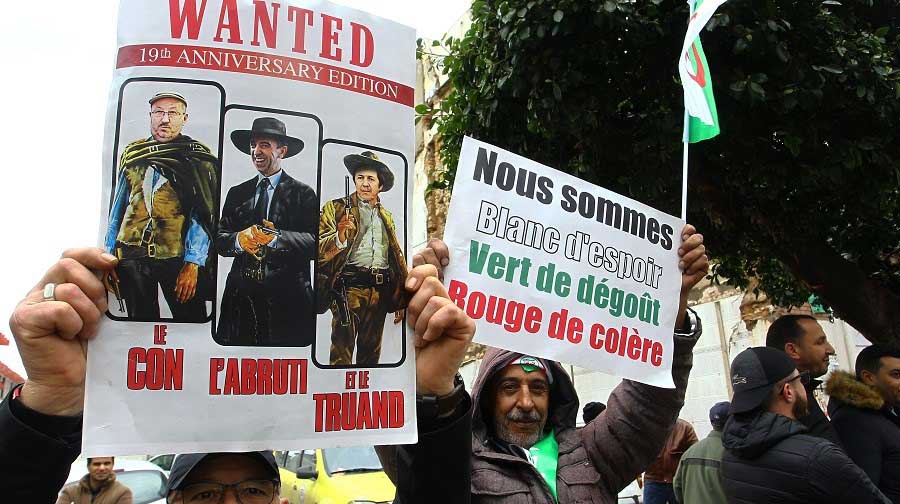

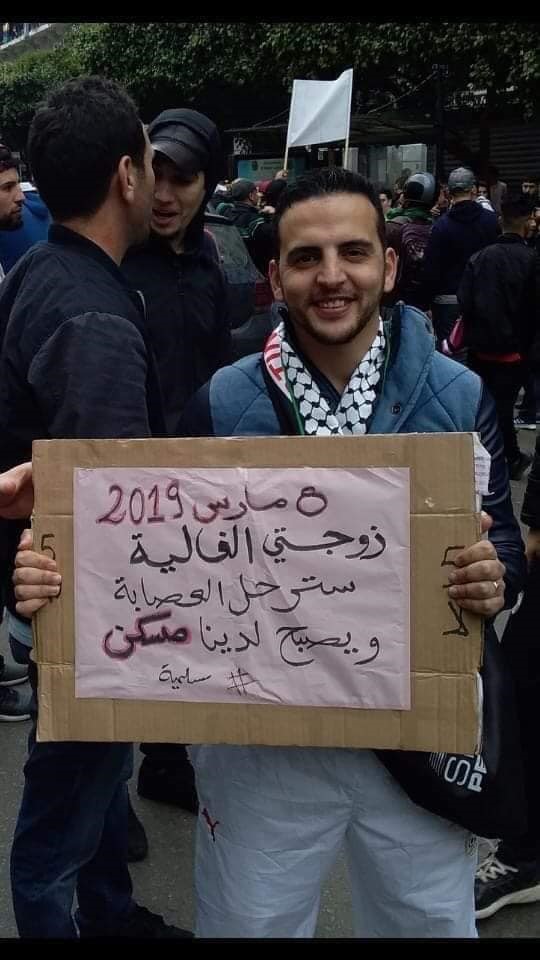
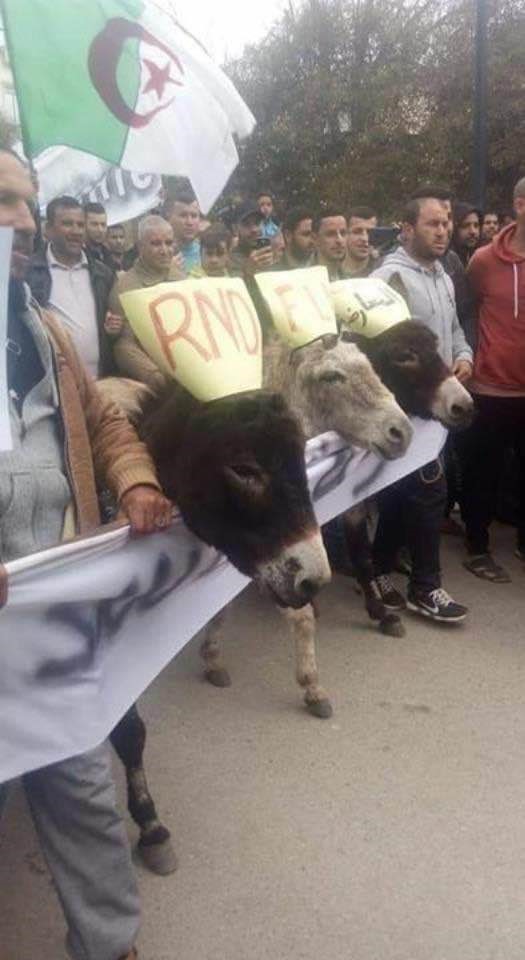
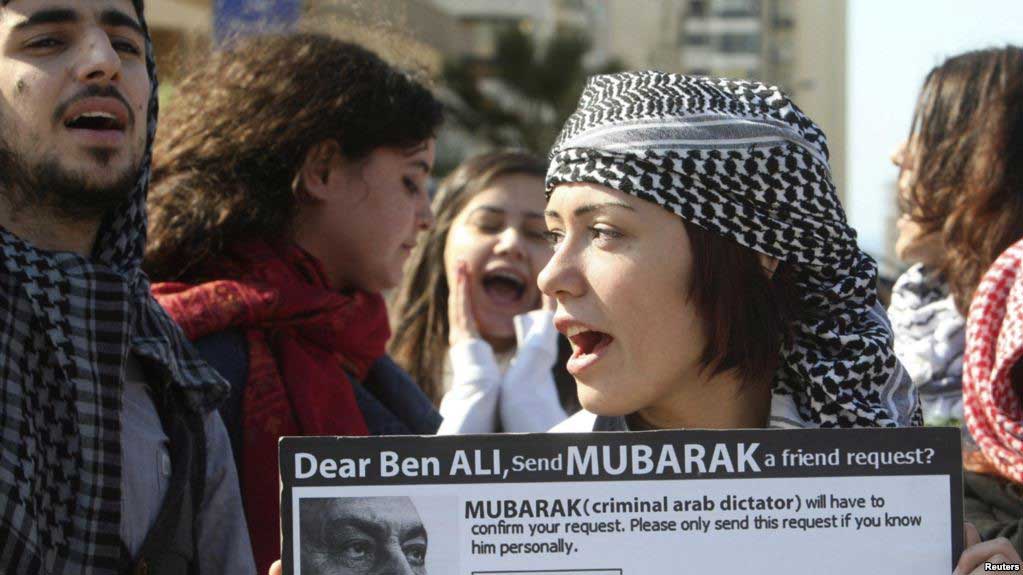
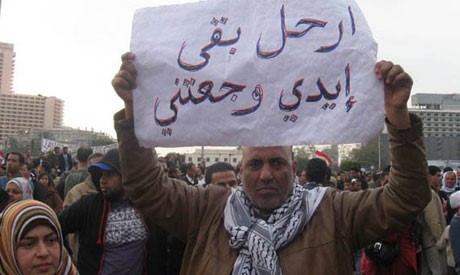
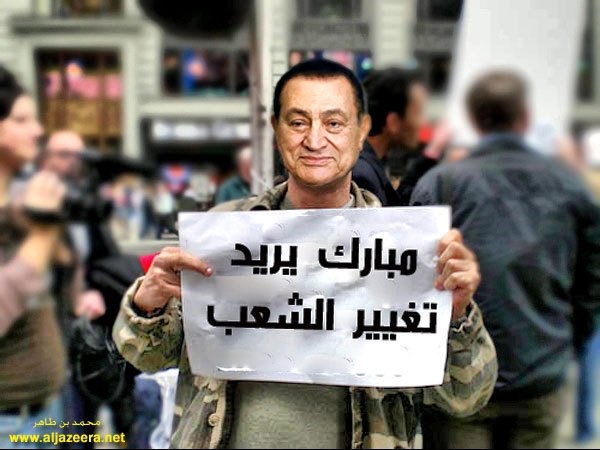
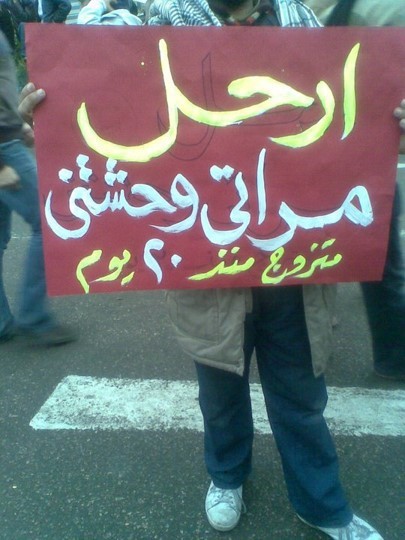

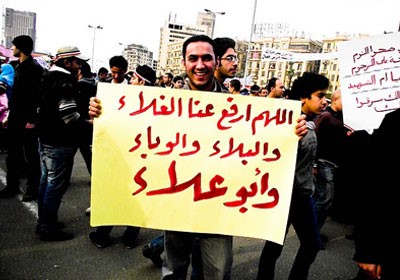


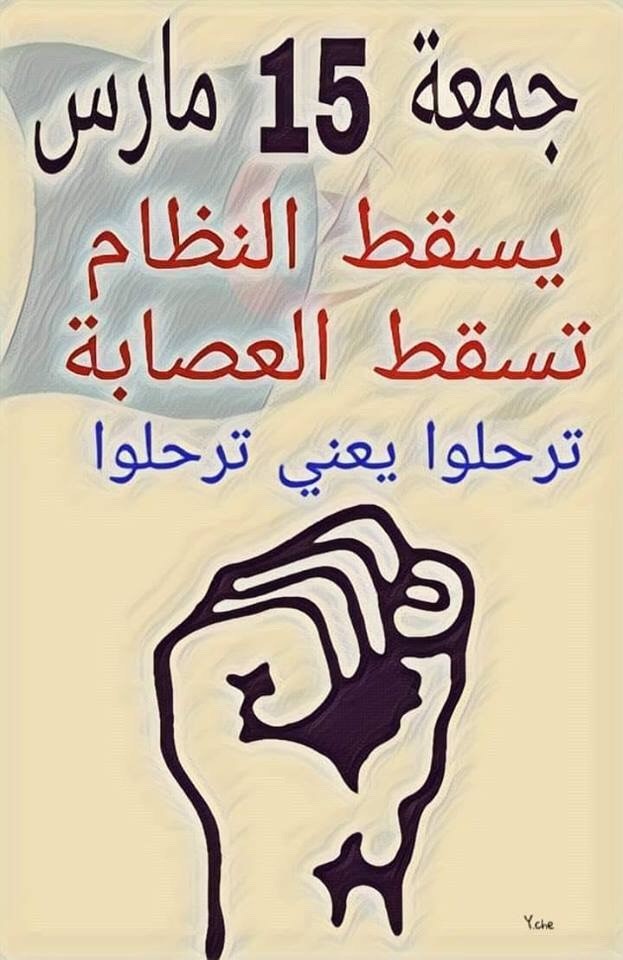
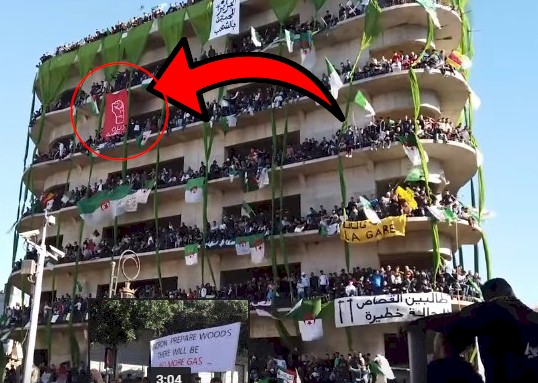
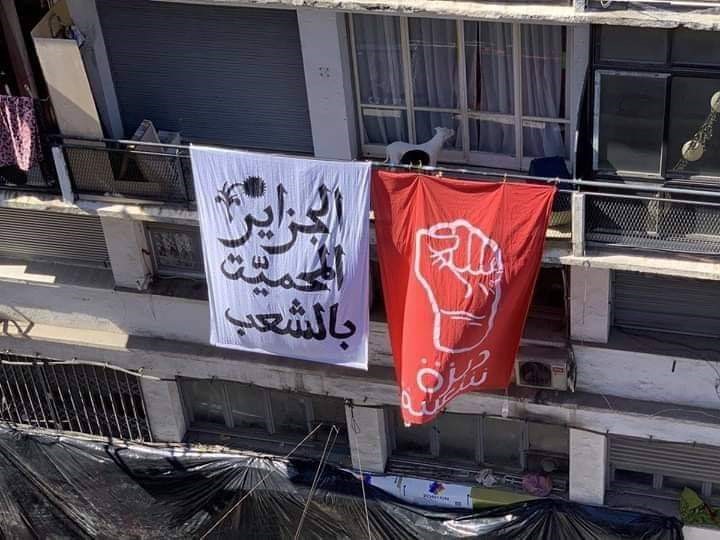
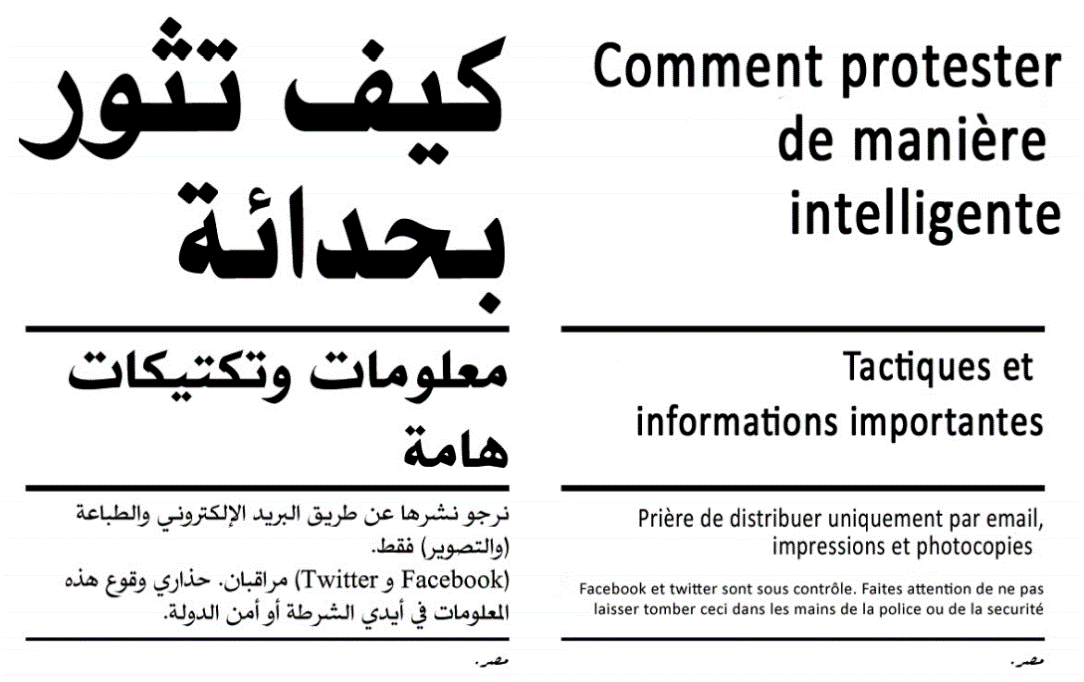
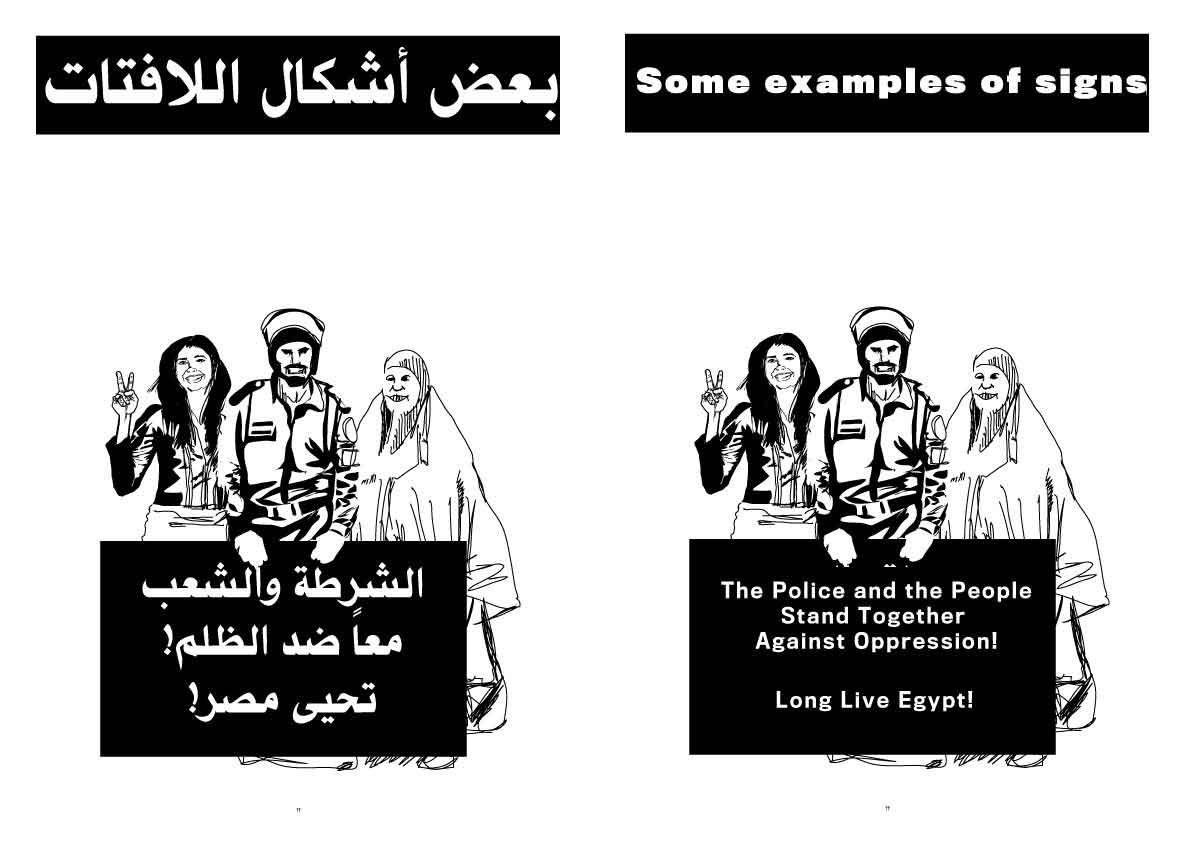
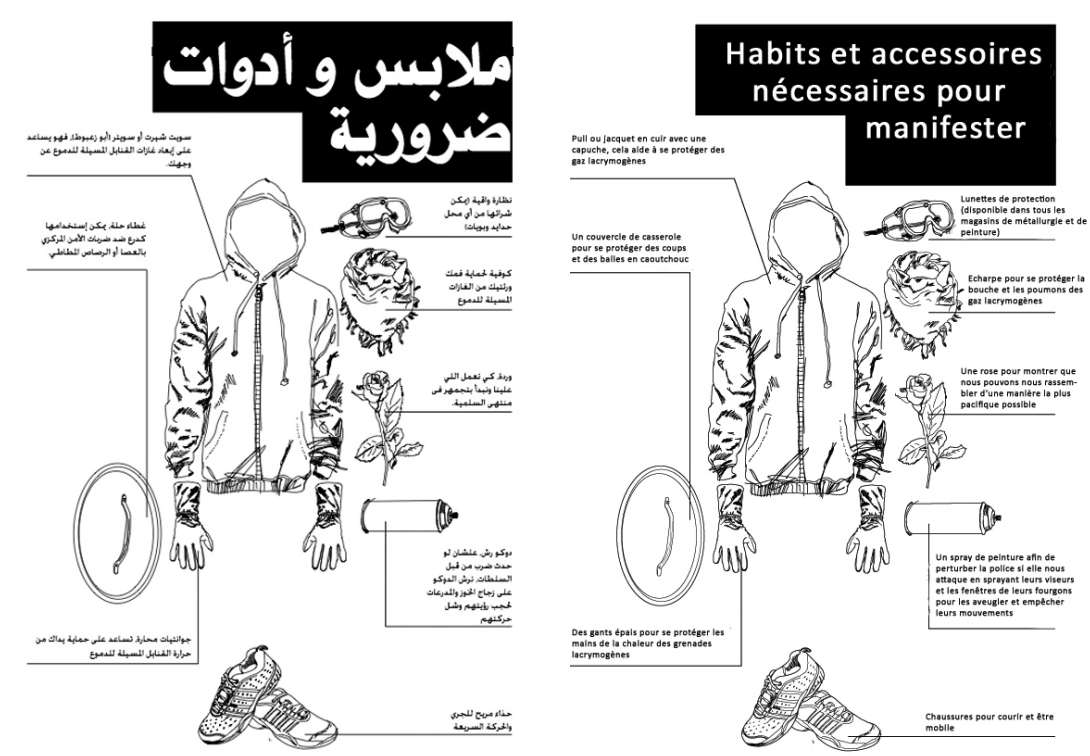
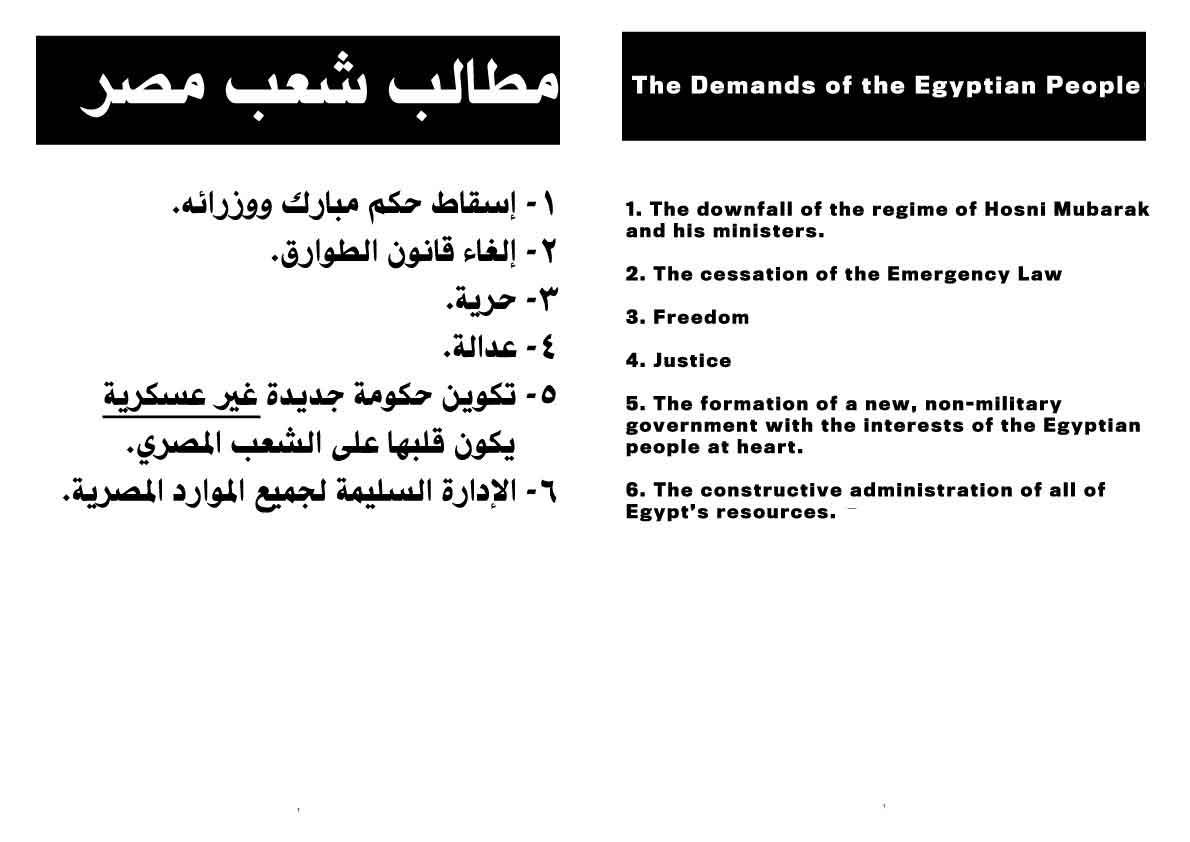




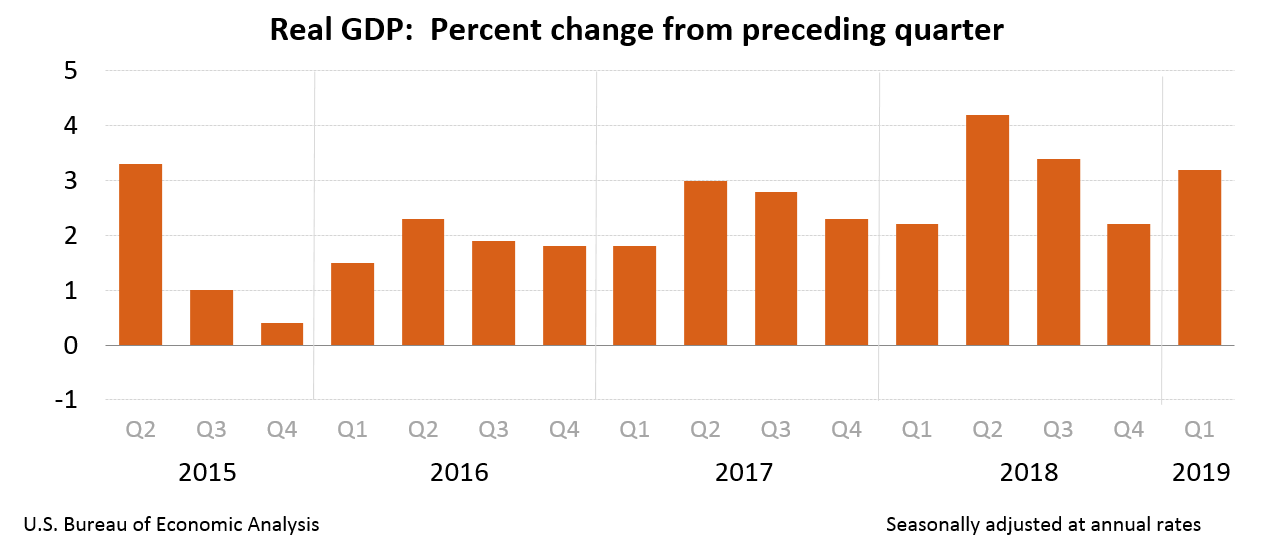

![Image of US soldiers during the 2003 invasion in Baghdad, Iraq [DVIDSHUB/Flickr]](https://i1.wp.com/www.middleeastmonitor.com/wp-content/uploads/2017/04/2008_8-22-US-troops-in-iraq.jpg?resize=933.5%2C622&quality=75&strip=all&ssl=1)

